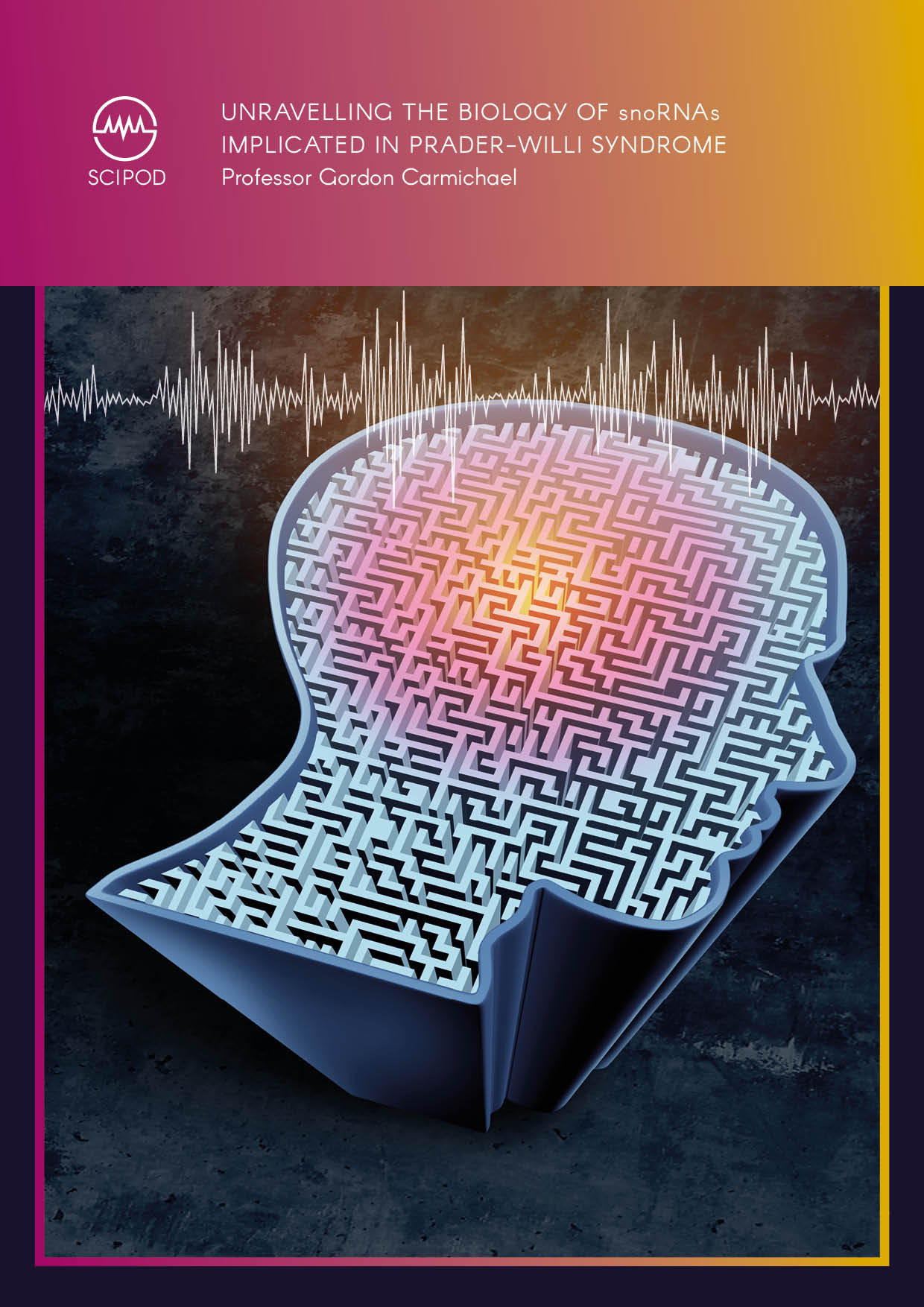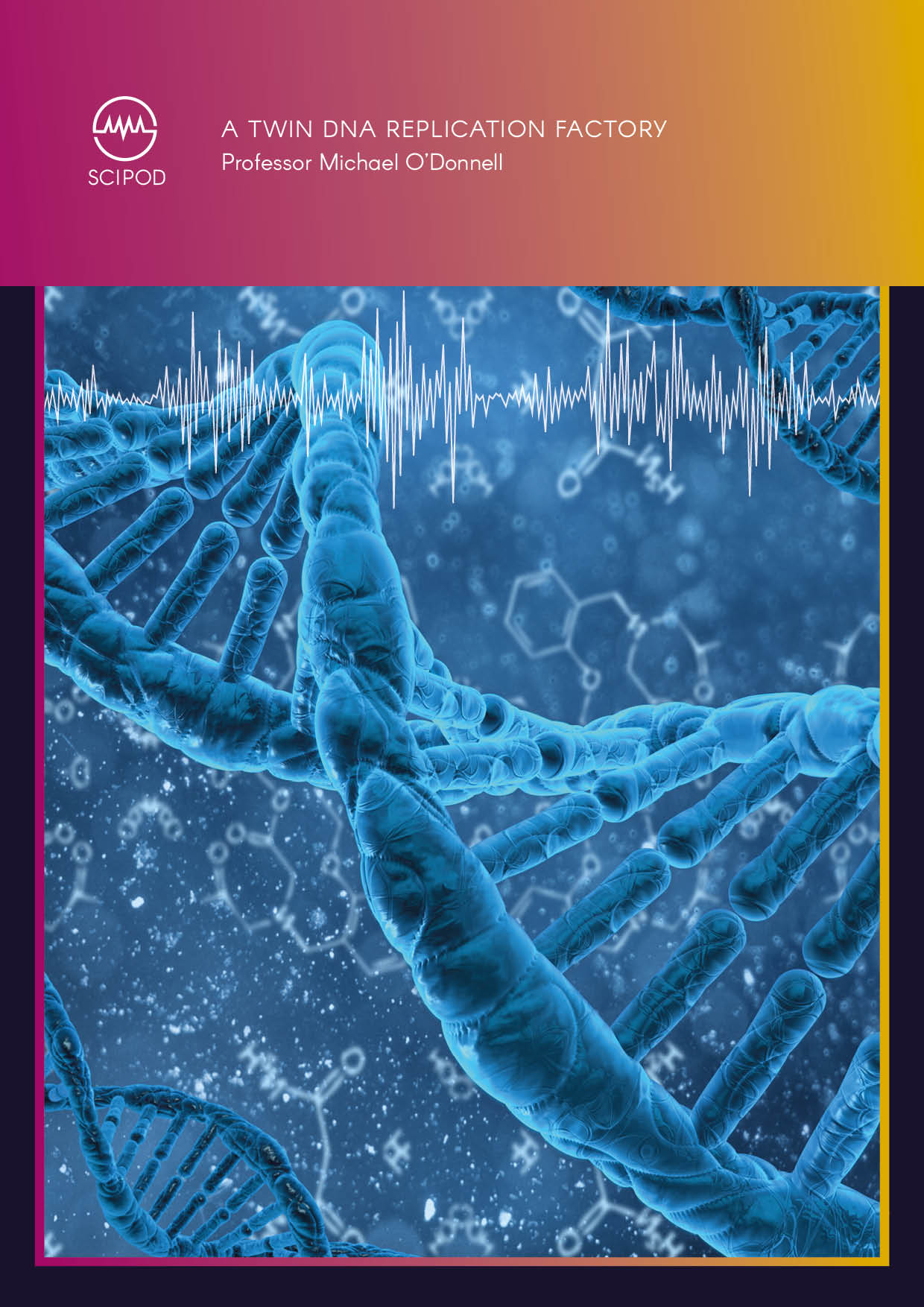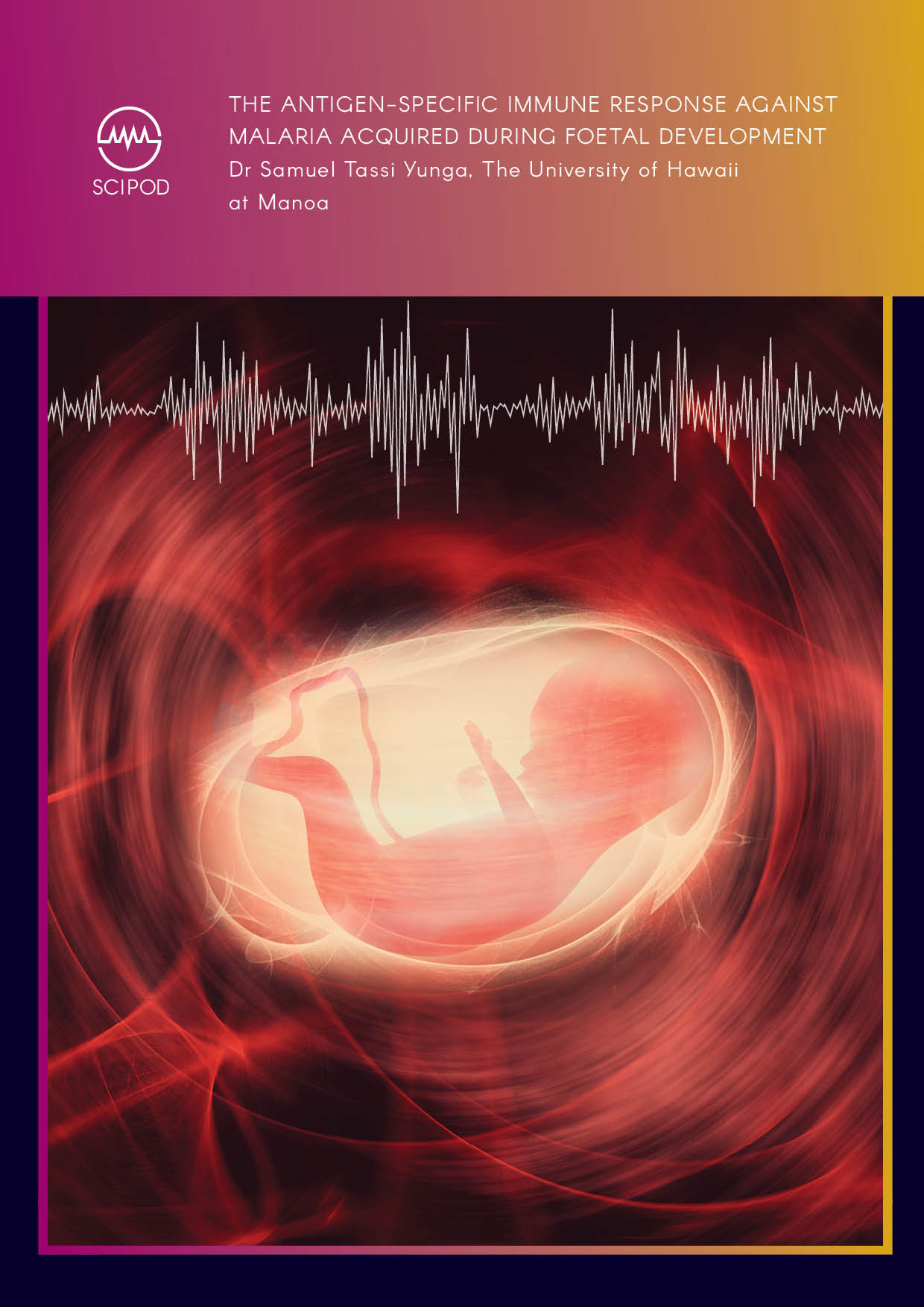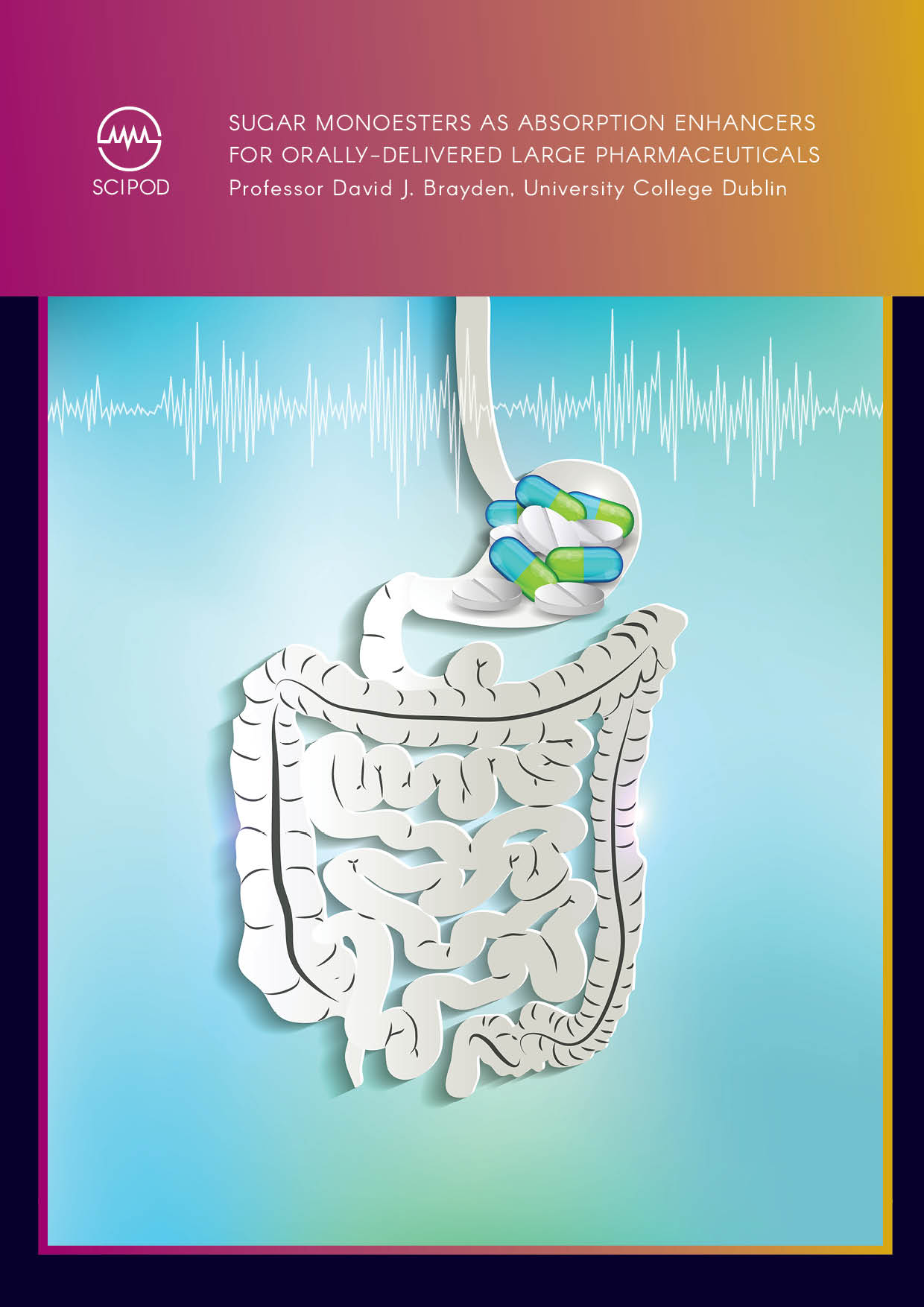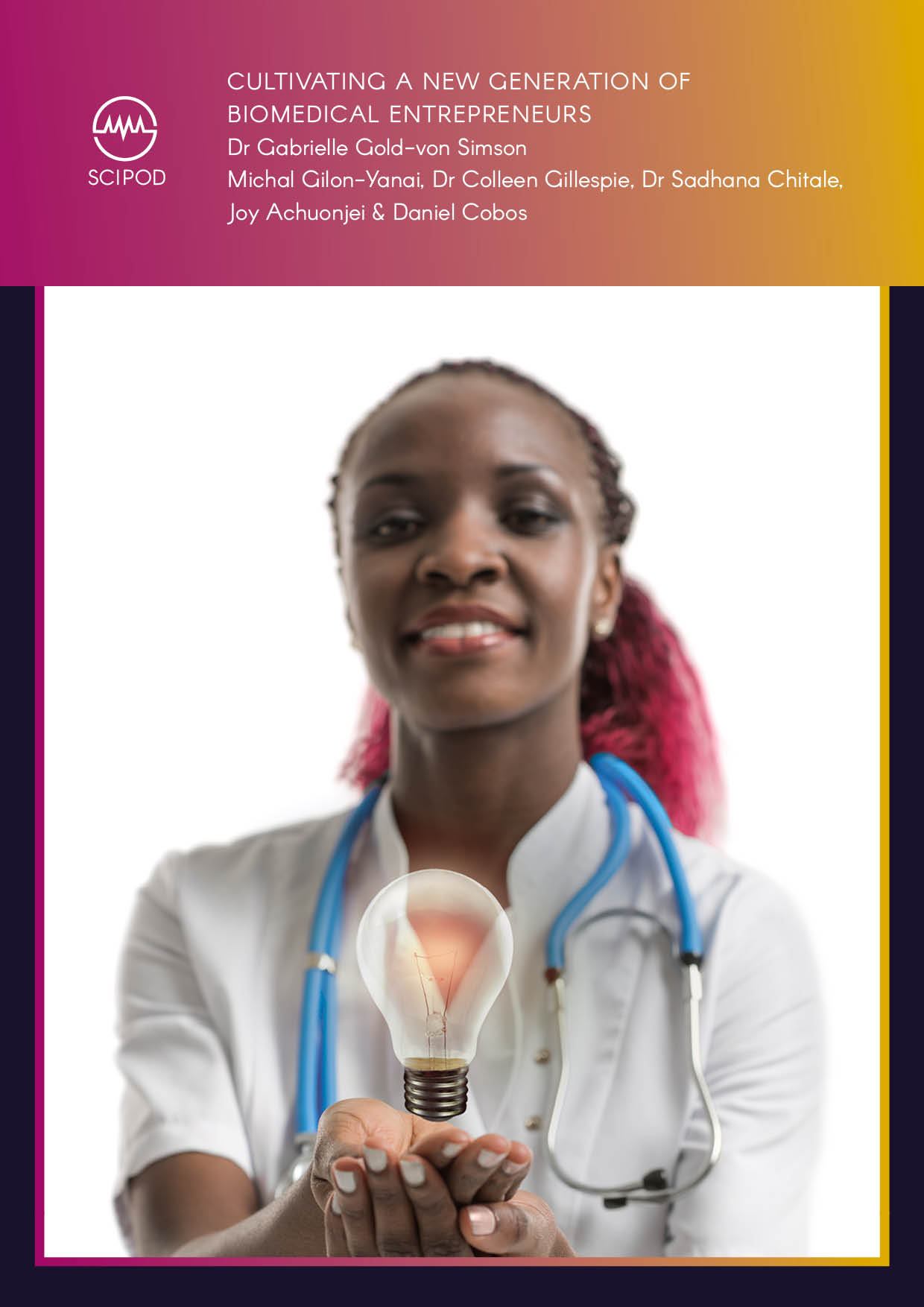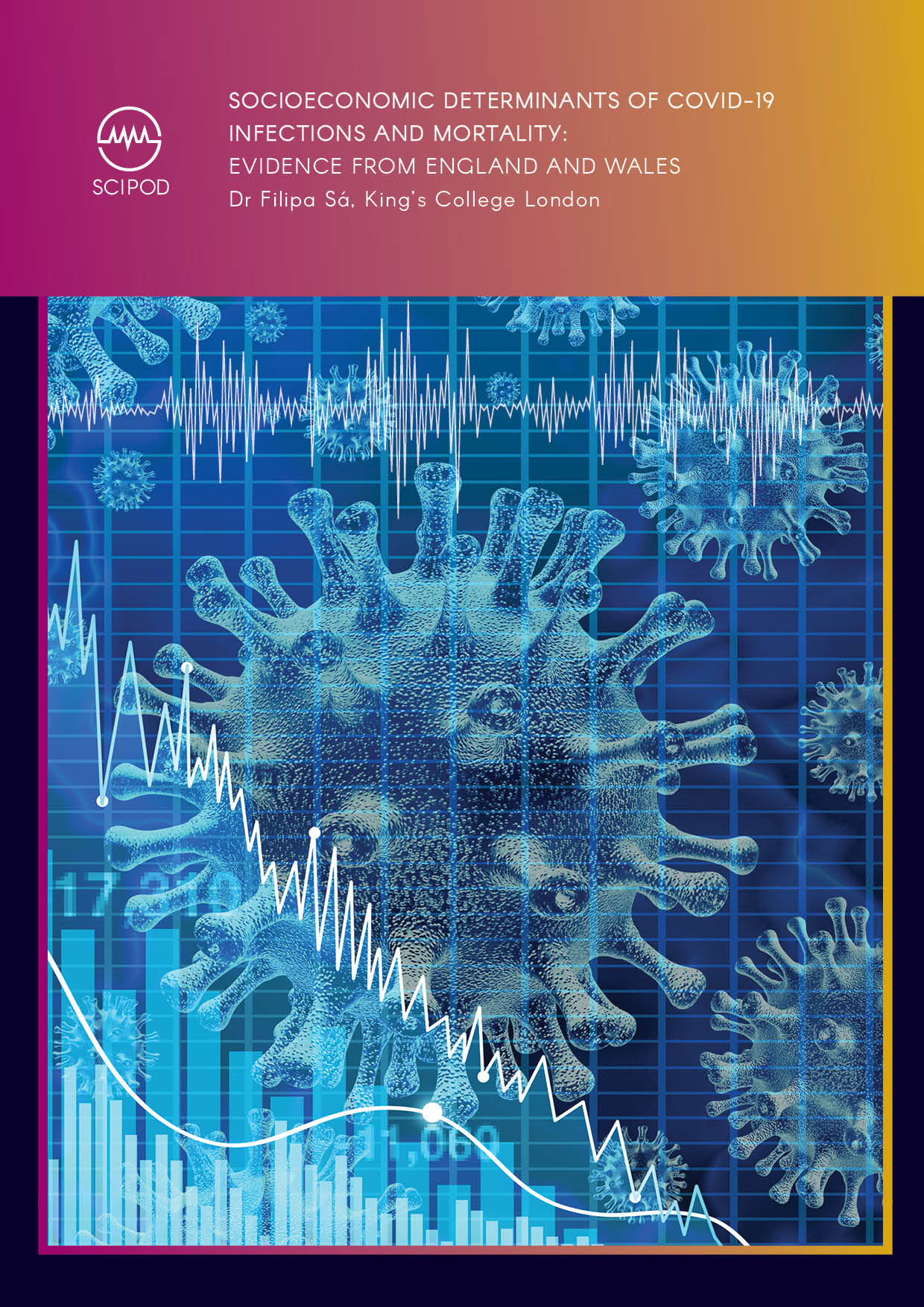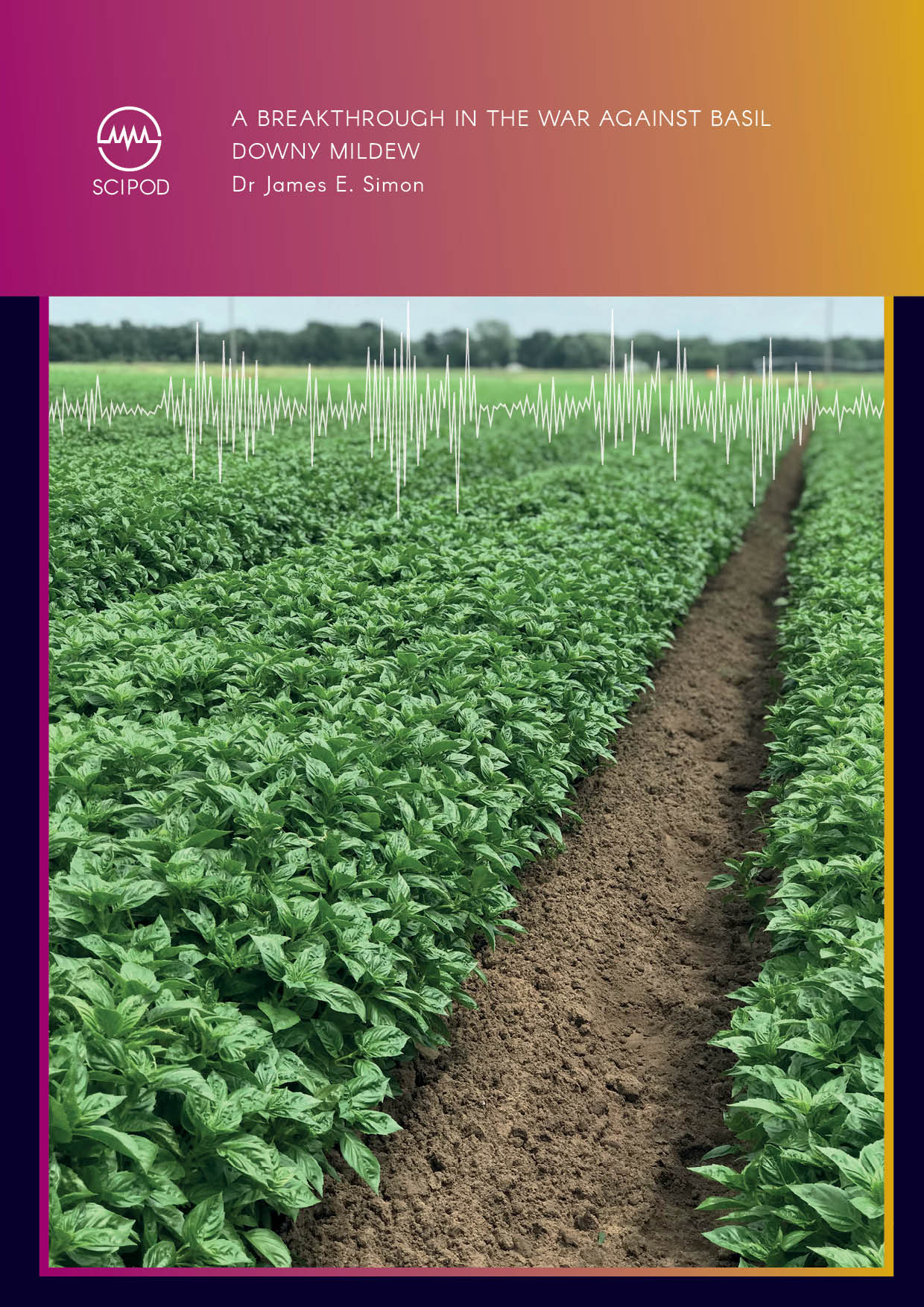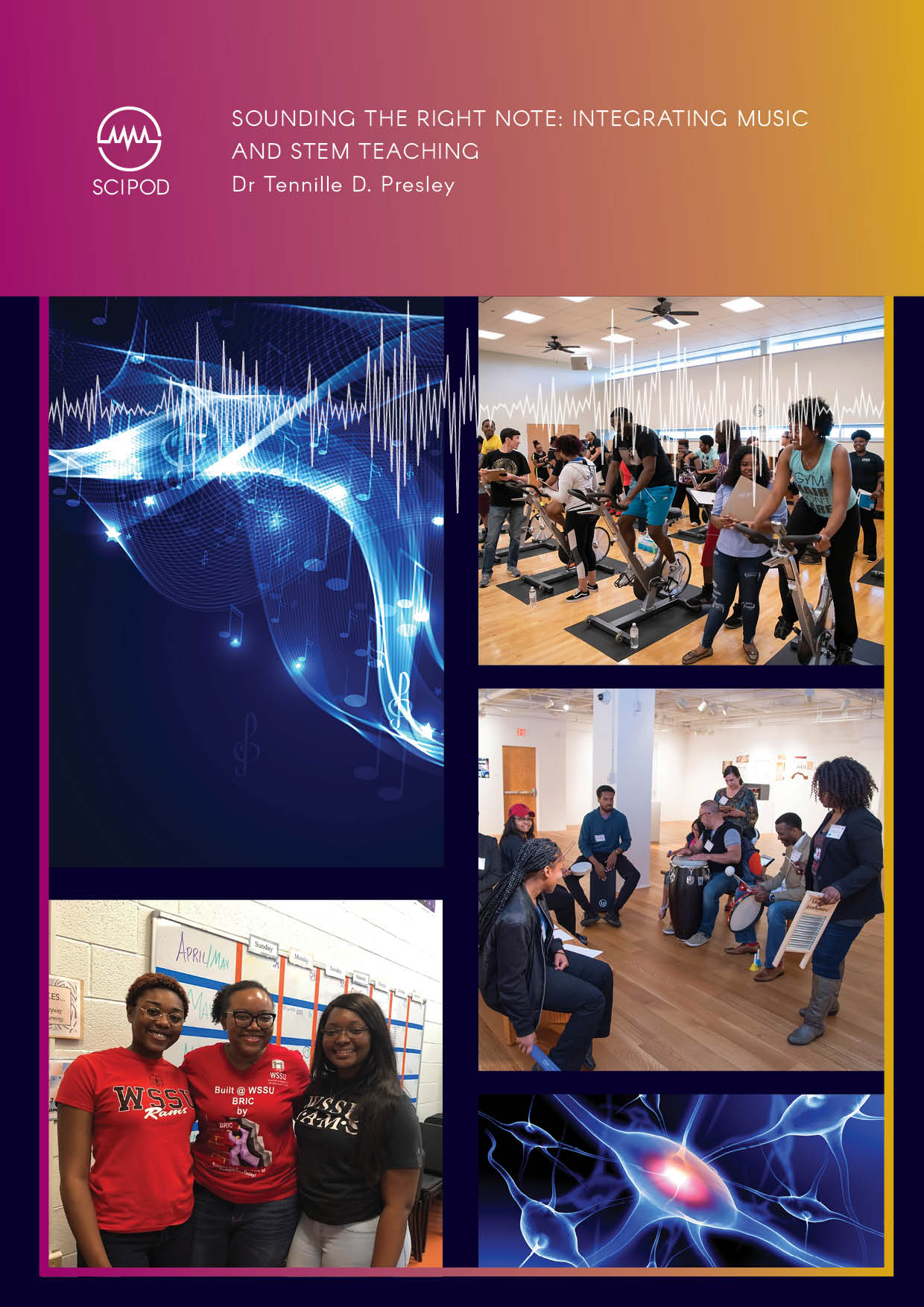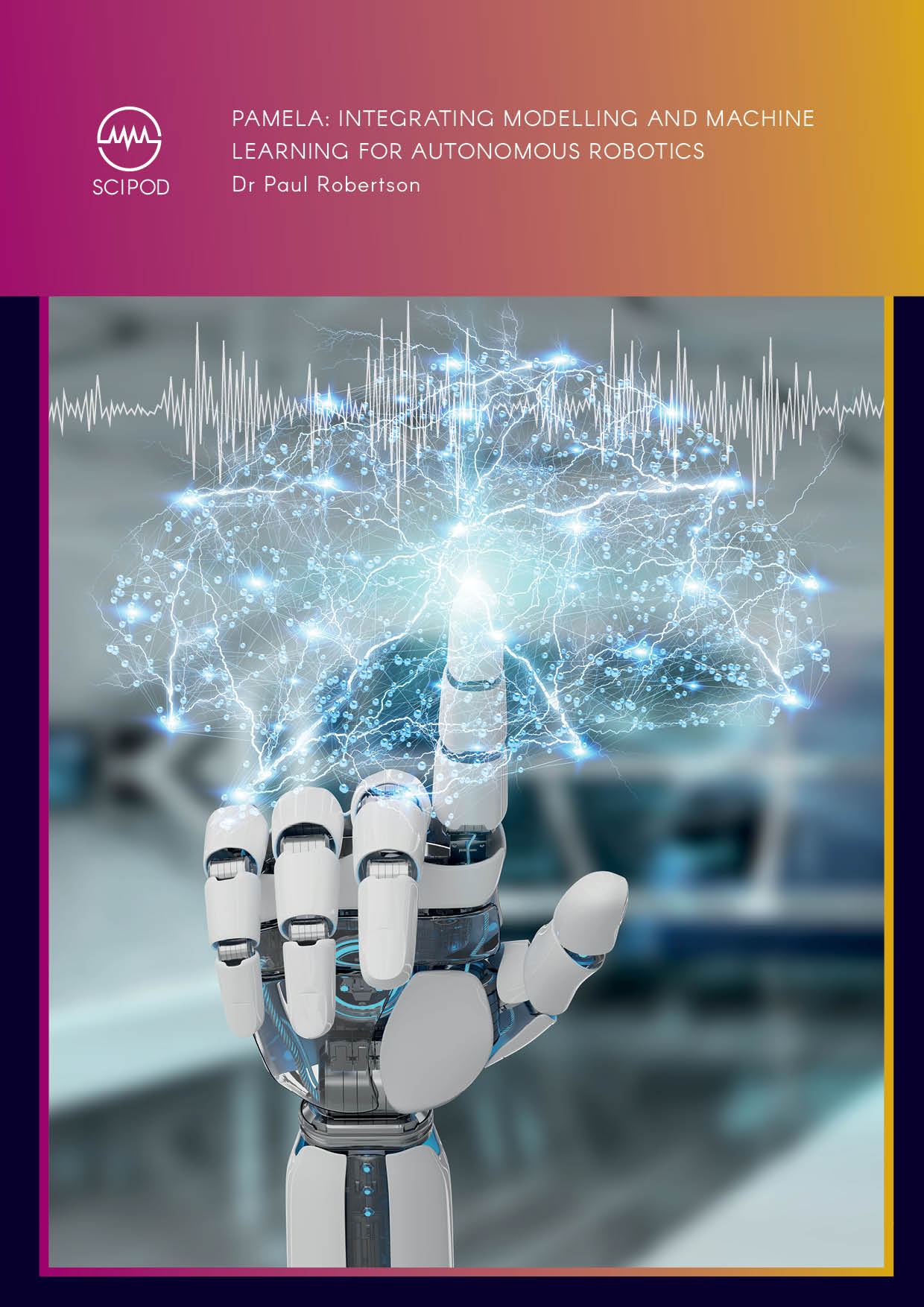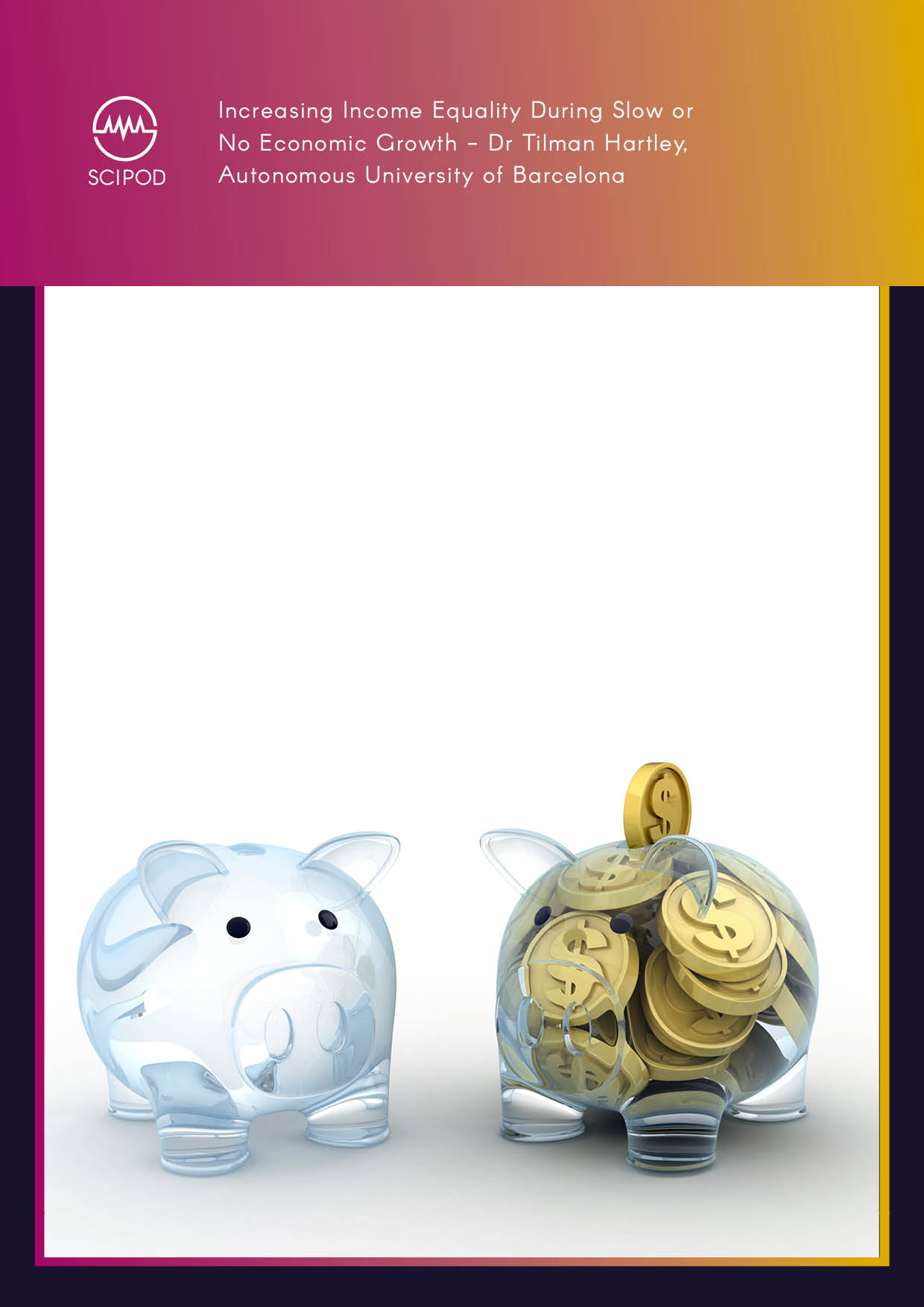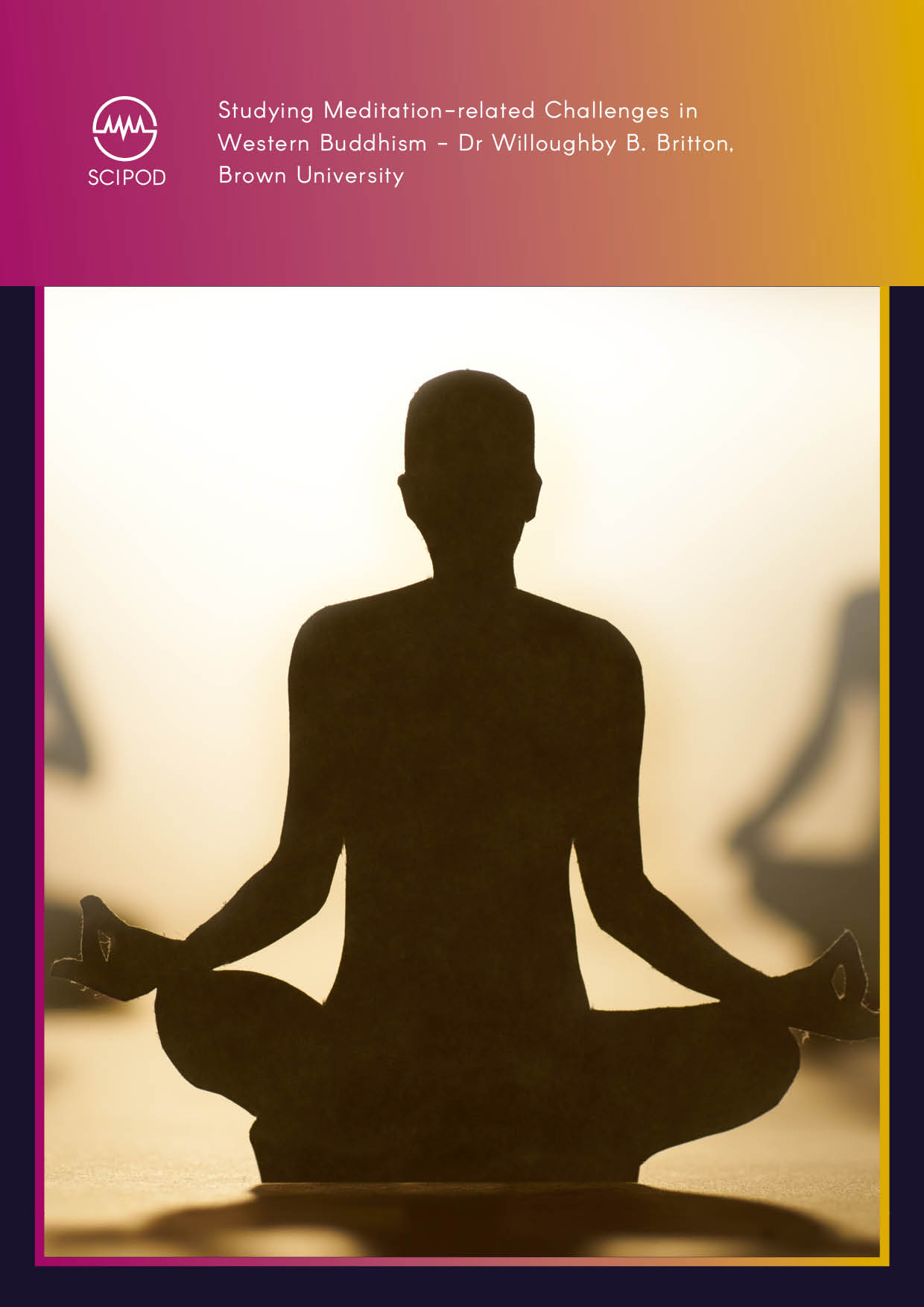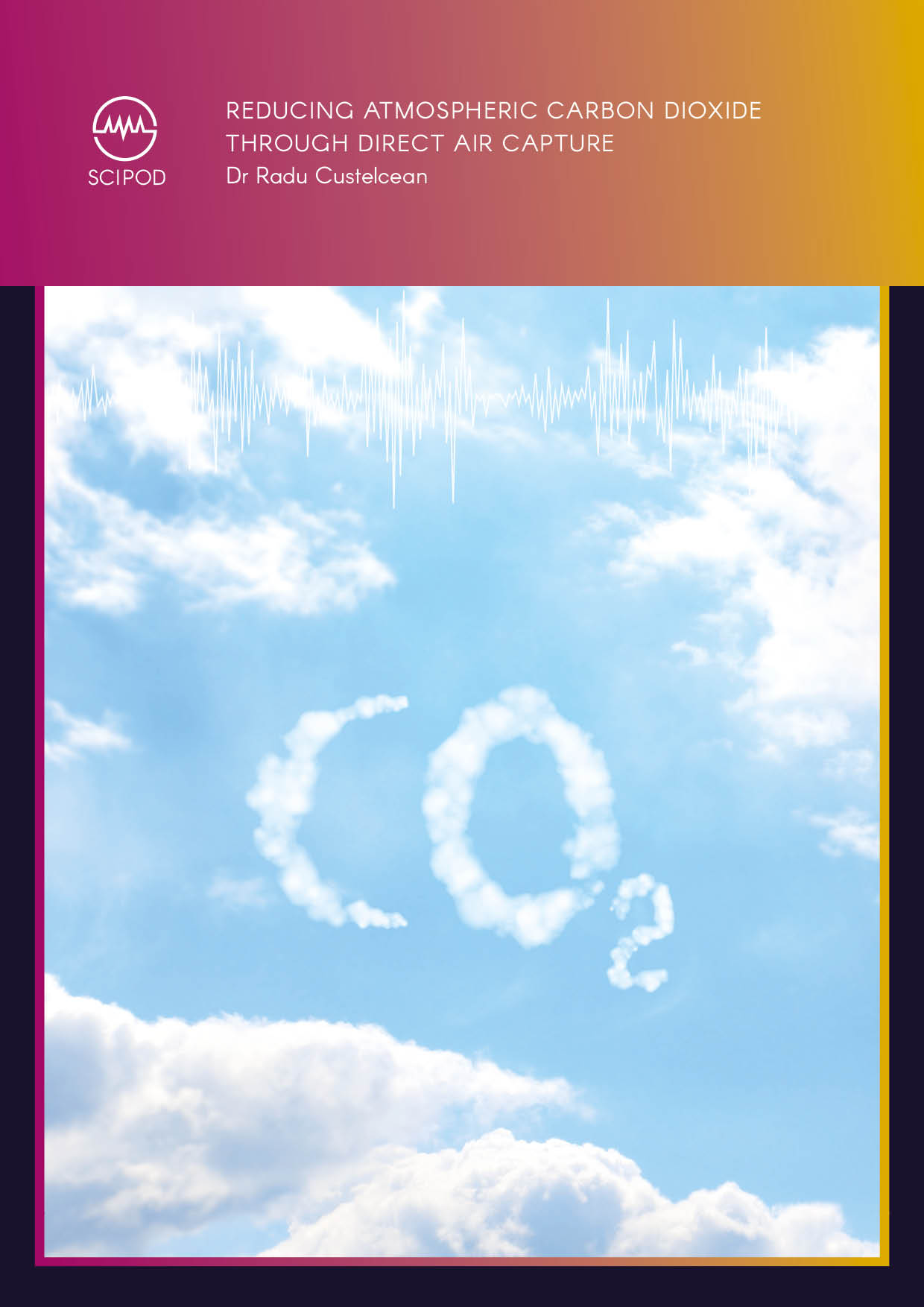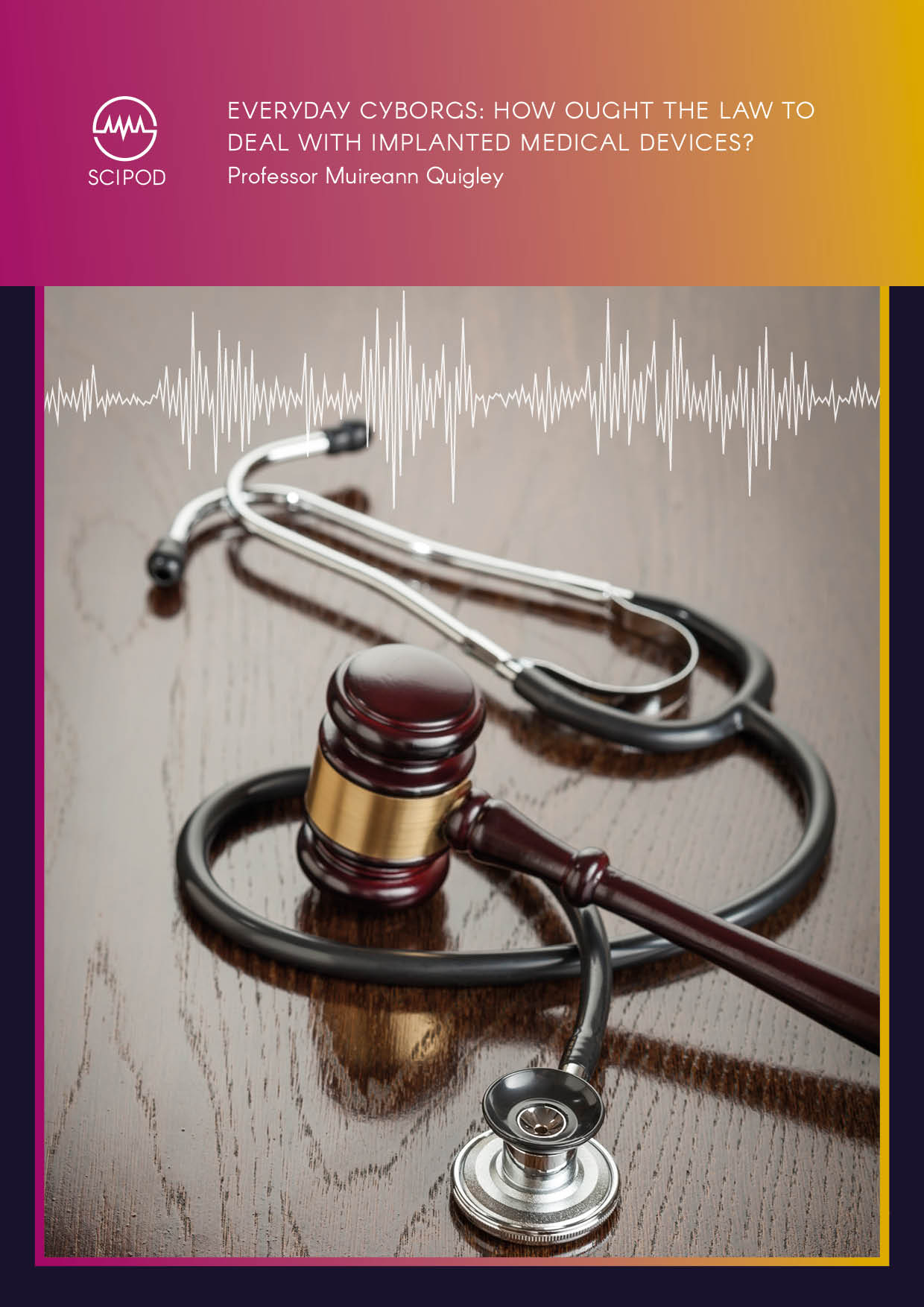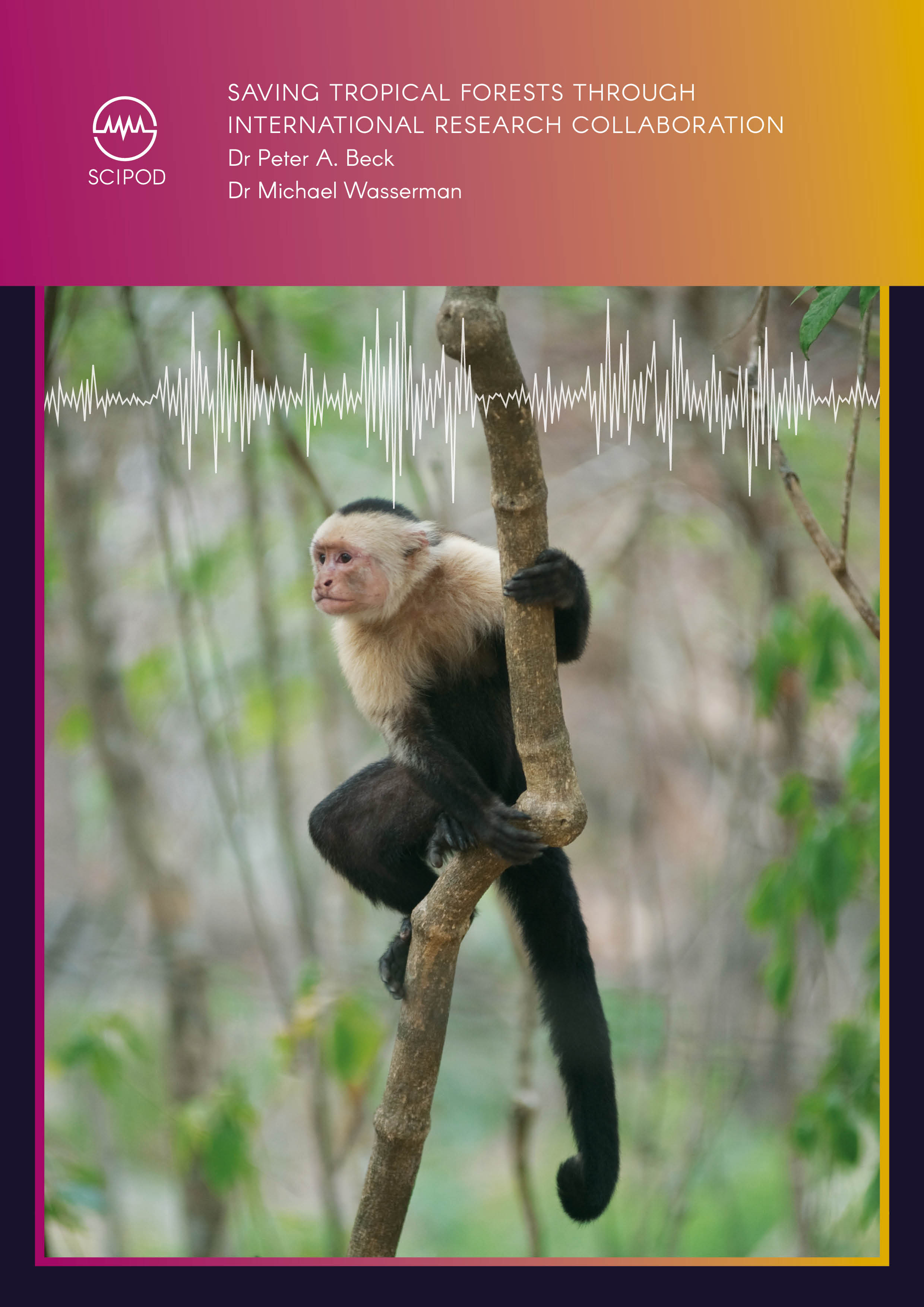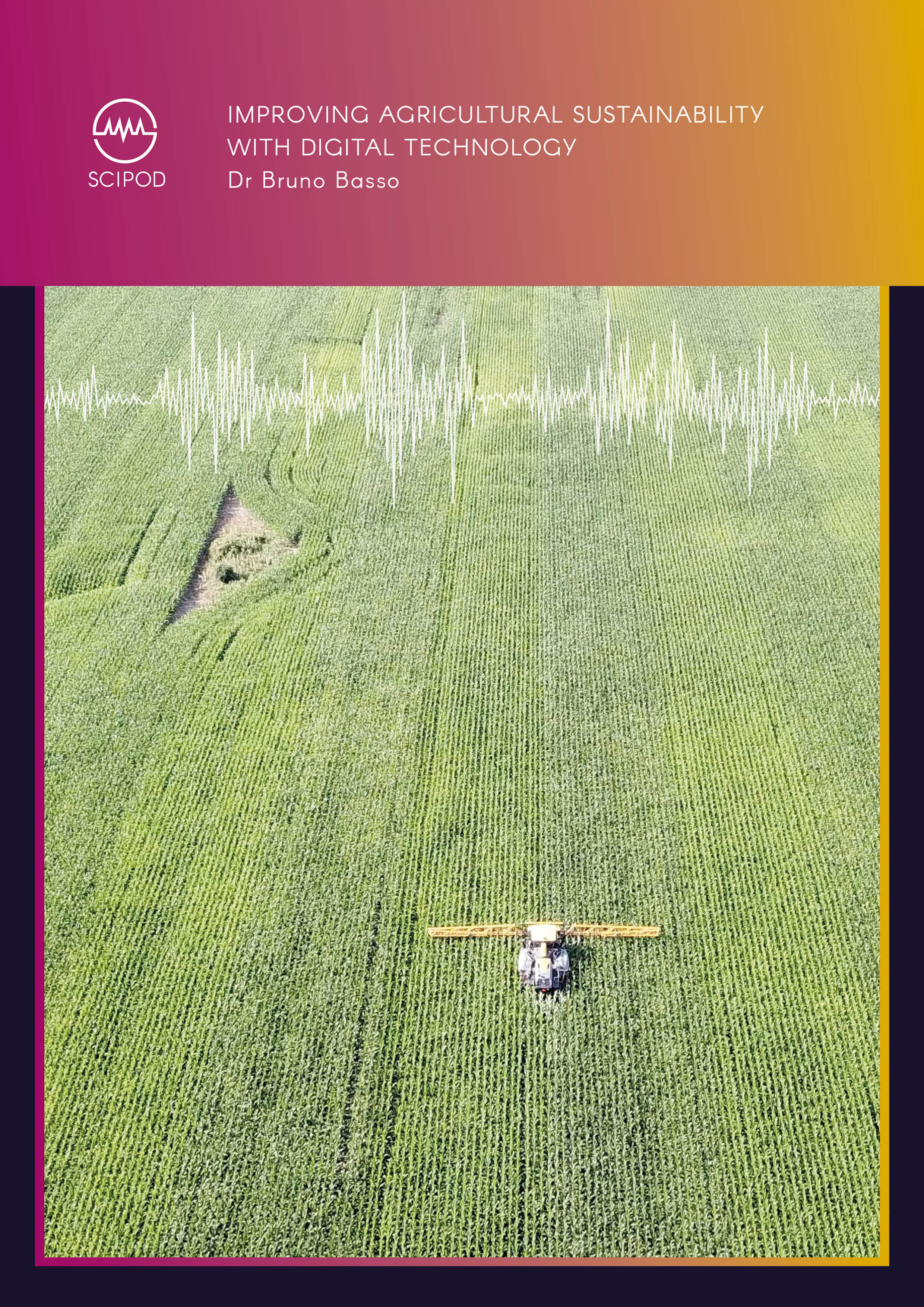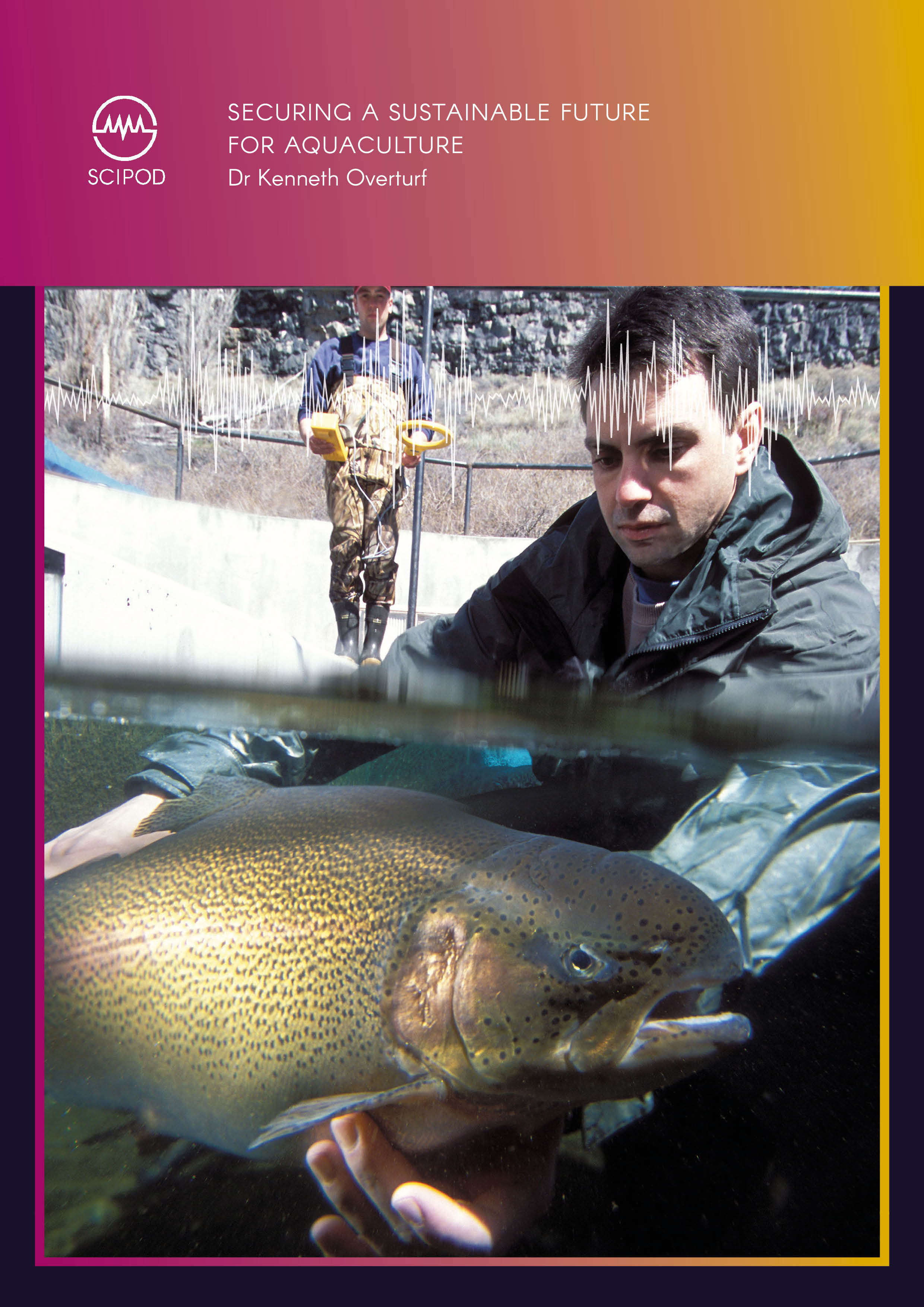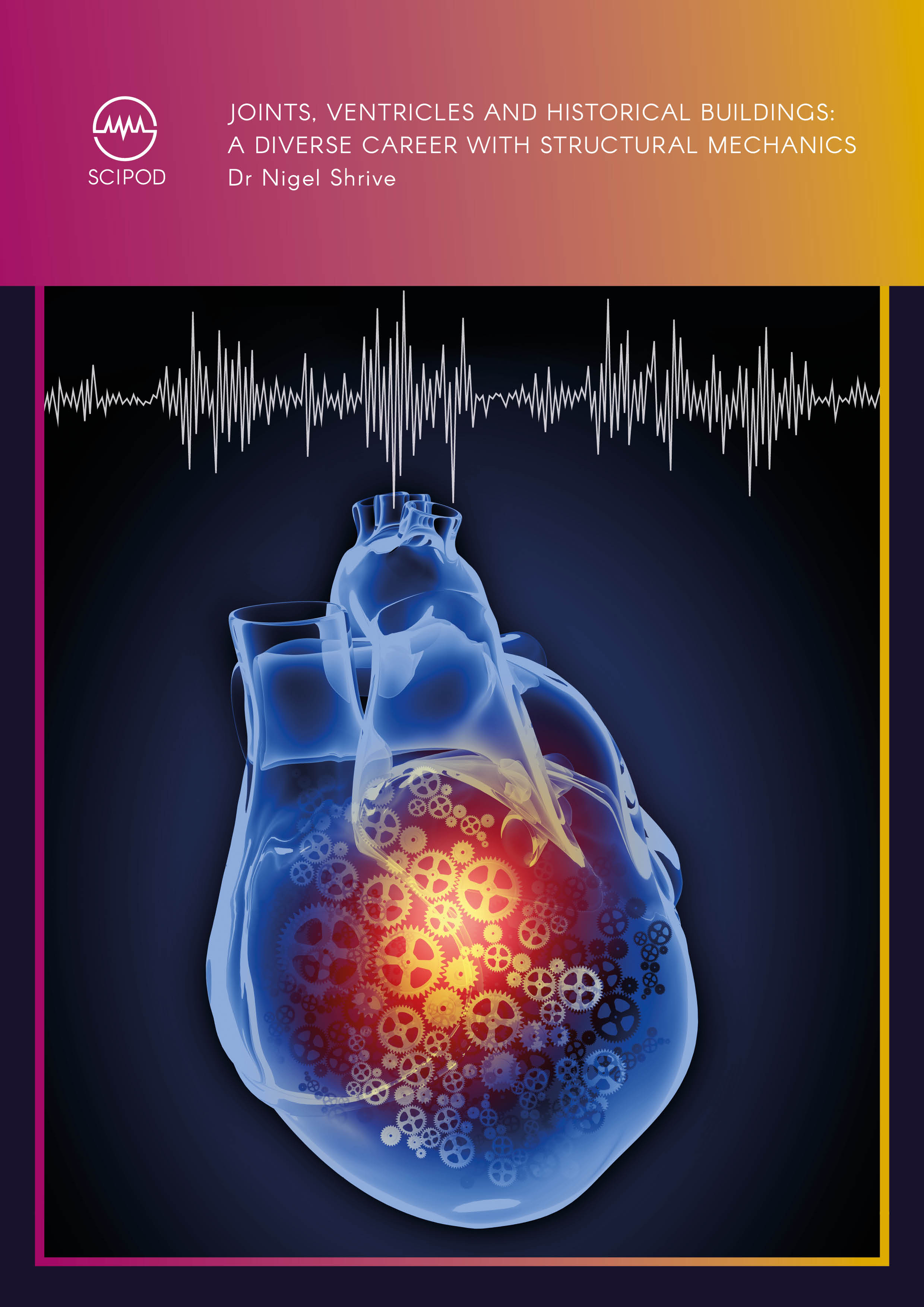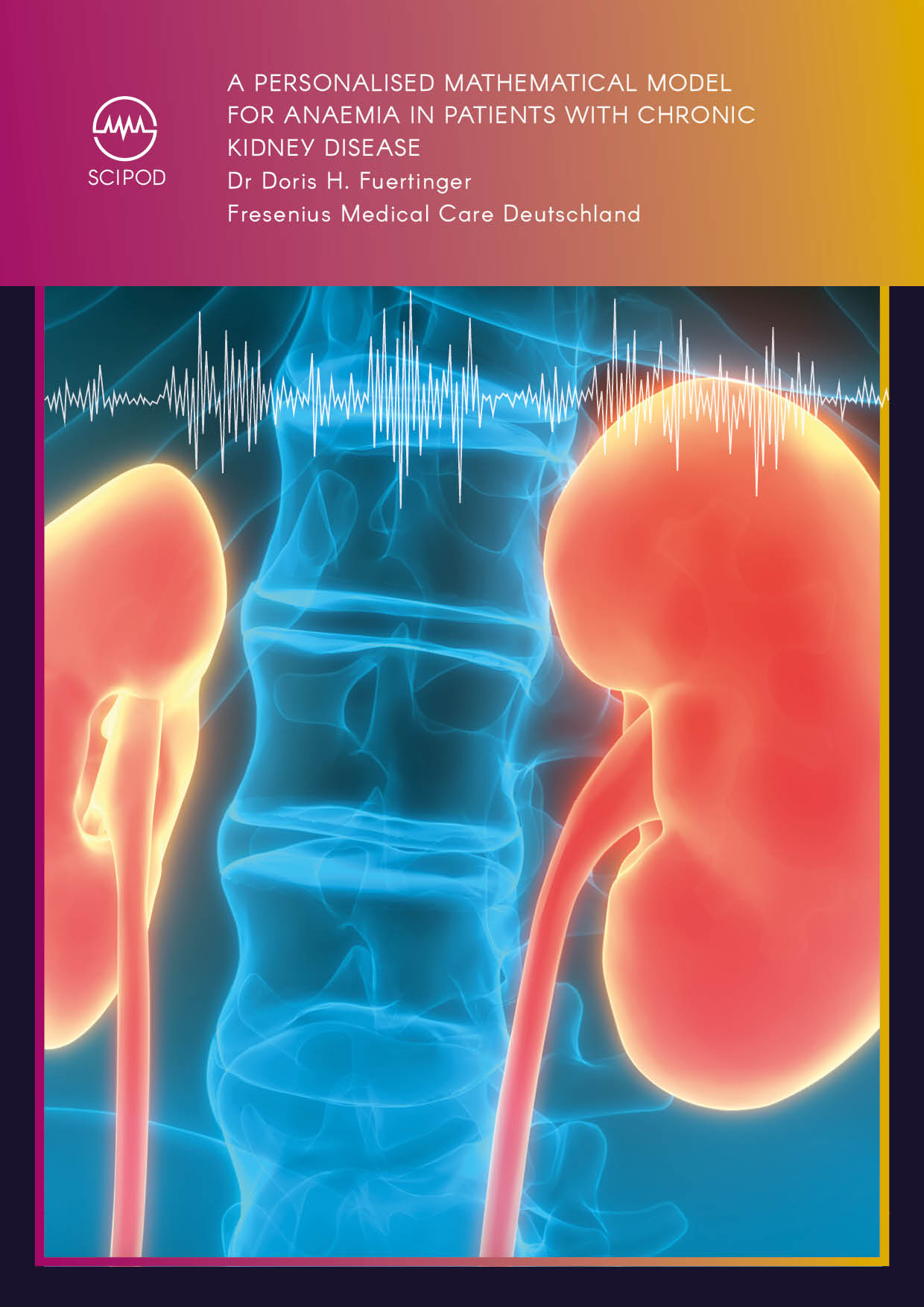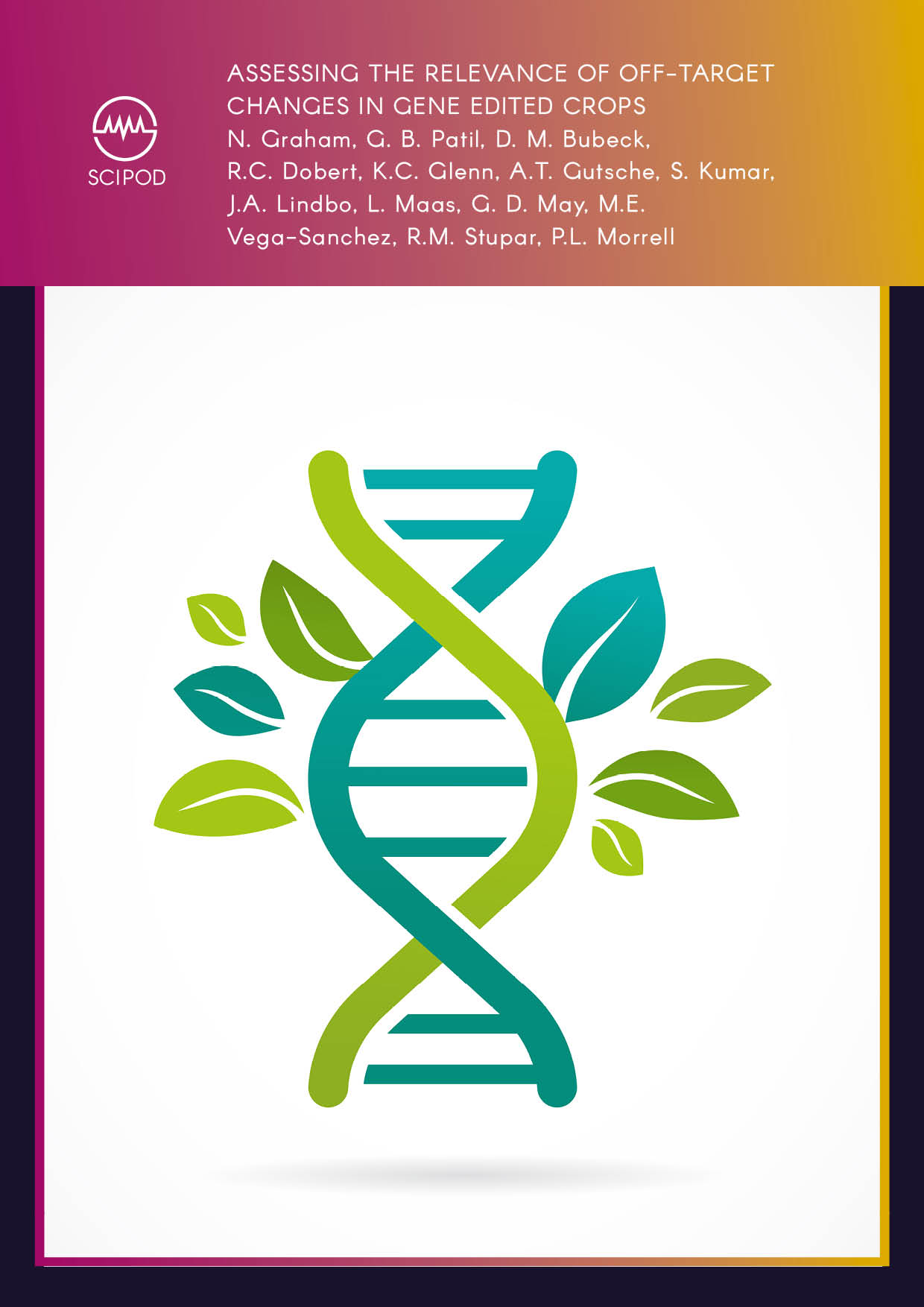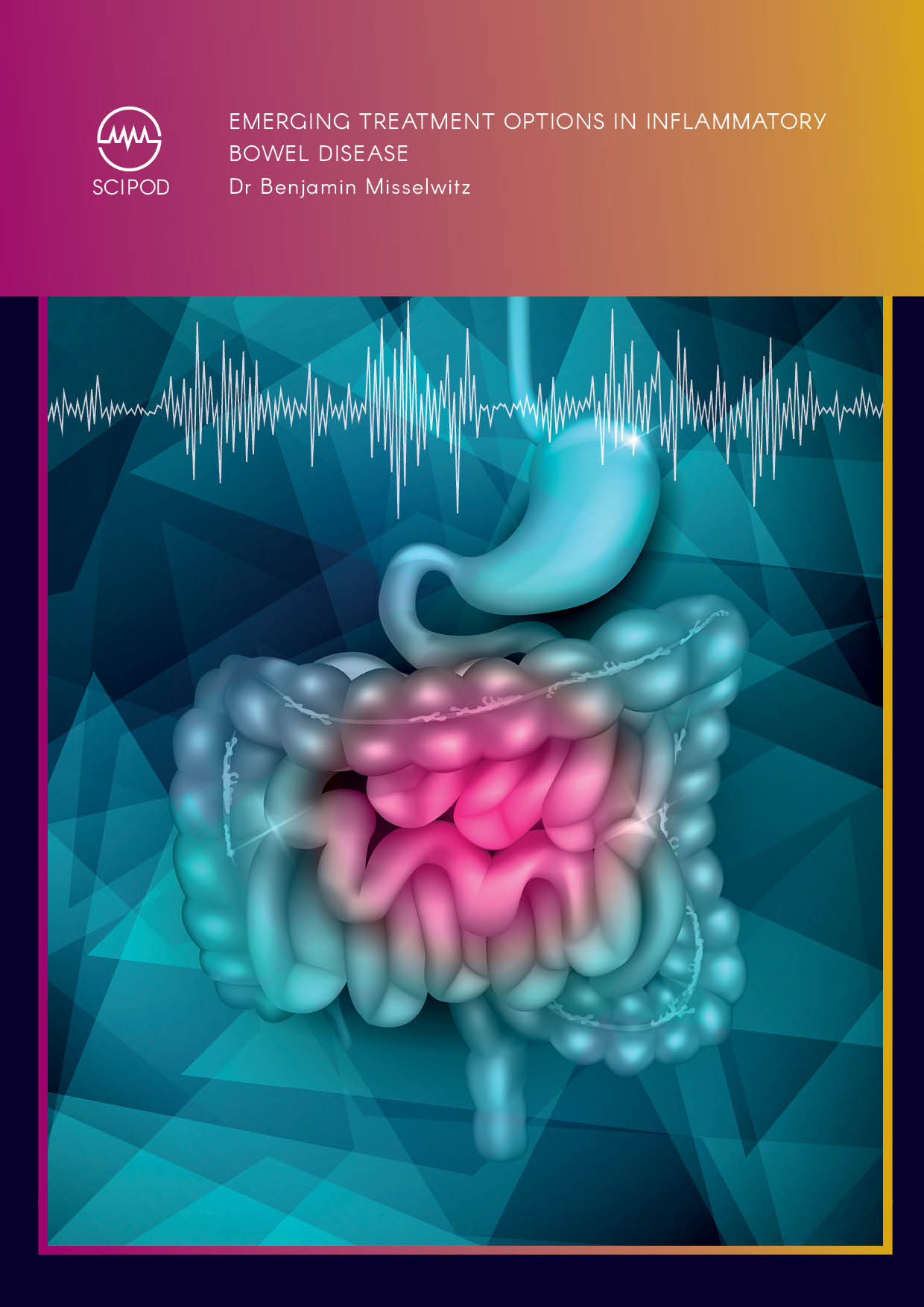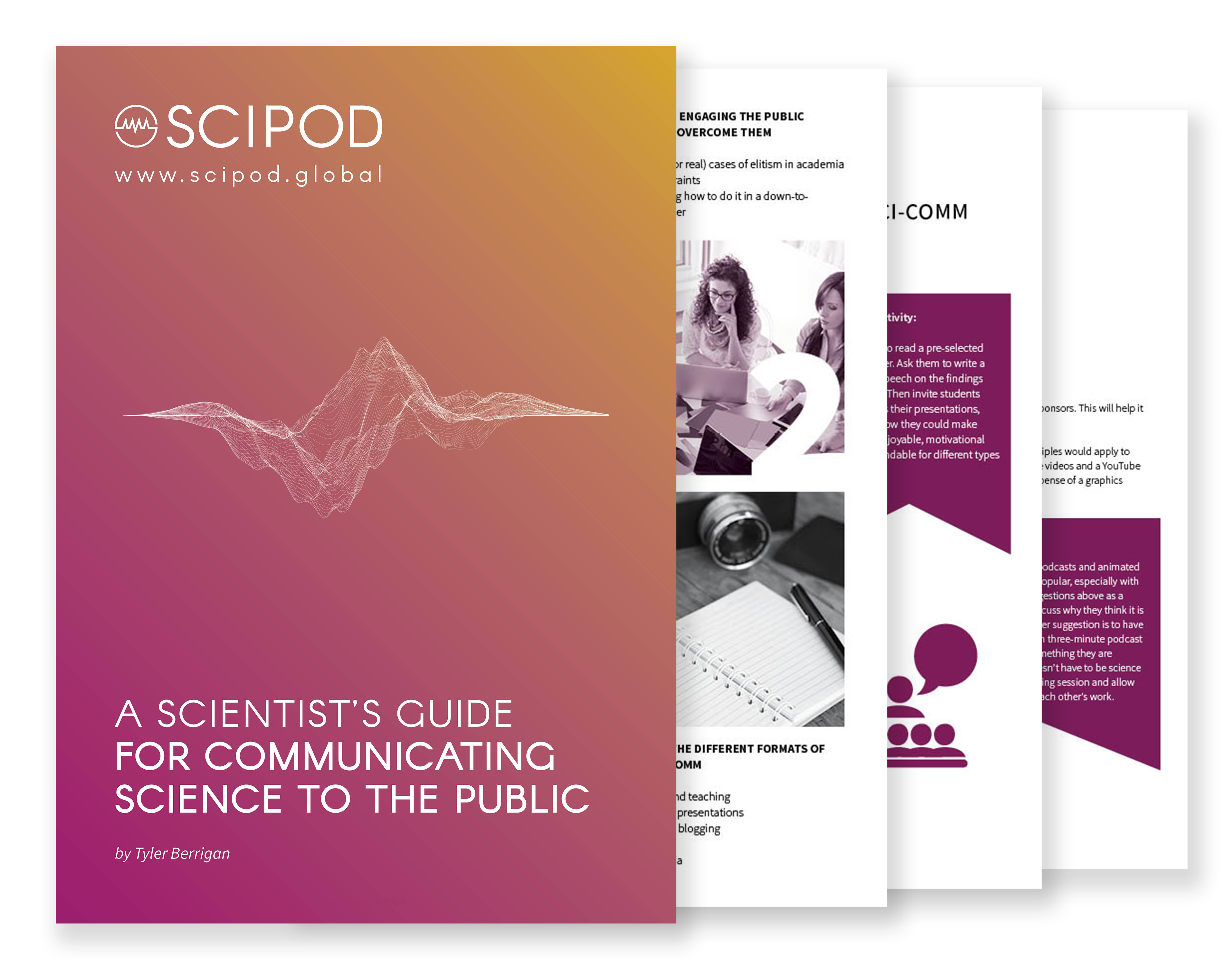Welcome to SciComm Radio
An exclusive interview series with leading scientists and science communicators
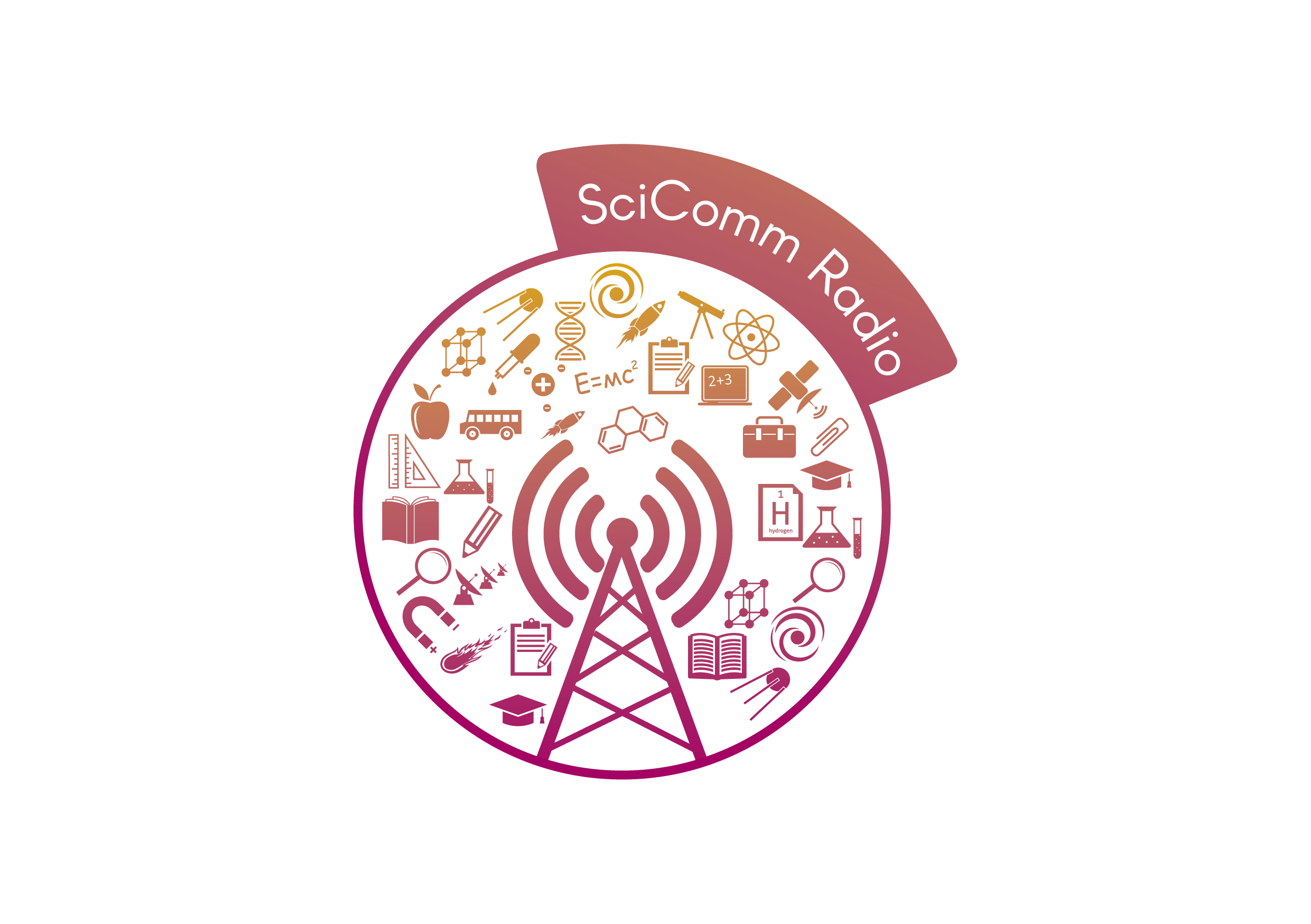
Click Below To Listen To A SciPod Radio Episode
Unravelling the Biology of snoRNAs Implicated in Prader-Willi Syndrome – Professor Gordon Carmichael, University of Connecticut Health Centre
Unravelling the Biology of snoRNAs Implicated in Prader-Willi Syndrome – Professor Gordon Carmichael, University of Connecticut Health Centre
Original Article Reference
This SciPod is a summary of https://doi.org/10.33548/SCIENTIA547
Share Episode
About this episode
Prader-Willi Syndrome is a rare genetic neurodevelopmental disorder that gives rise to a vast array of symptoms which affect the individual from birth. There is currently no cure for Prader-Willi Syndrome. Professor Gordon Carmichael and his team from the Department of Genetics and Genome Sciences at the University of Connecticut Health Centre, USA, believe it is crucial to understand the affected chromosome 15 region to unravel the pathogenesis of Prader-Willi Syndrome and his team are making significant strides towards achieving this goal.
This work is licensed under a Creative Commons Attribution 4.0 International License. 
What does this mean?
Share: You can copy and redistribute the material in any medium or format
Adapt: You can change, and build upon the material for any purpose, even commercially.
Credit: You must give appropriate credit, provide a link to the license, and indicate if changes were made.
More episodes
Increase the impact of your research
• Good science communication helps people make informed decisions and motivates them to take appropriate and affirmative action.
• Good science communication encourages everyday people to be scientifically literate so that they can analyse the integrity and legitimacy of information.
• Good science communication encourages people into STEM-related fields of study and employment.
• Good public science communication fosters a community around research that includes both members of the public, policymakers and scientists.
• In a recent survey, 75% of people suggested they would prefer to listen to an interesting story than read it.
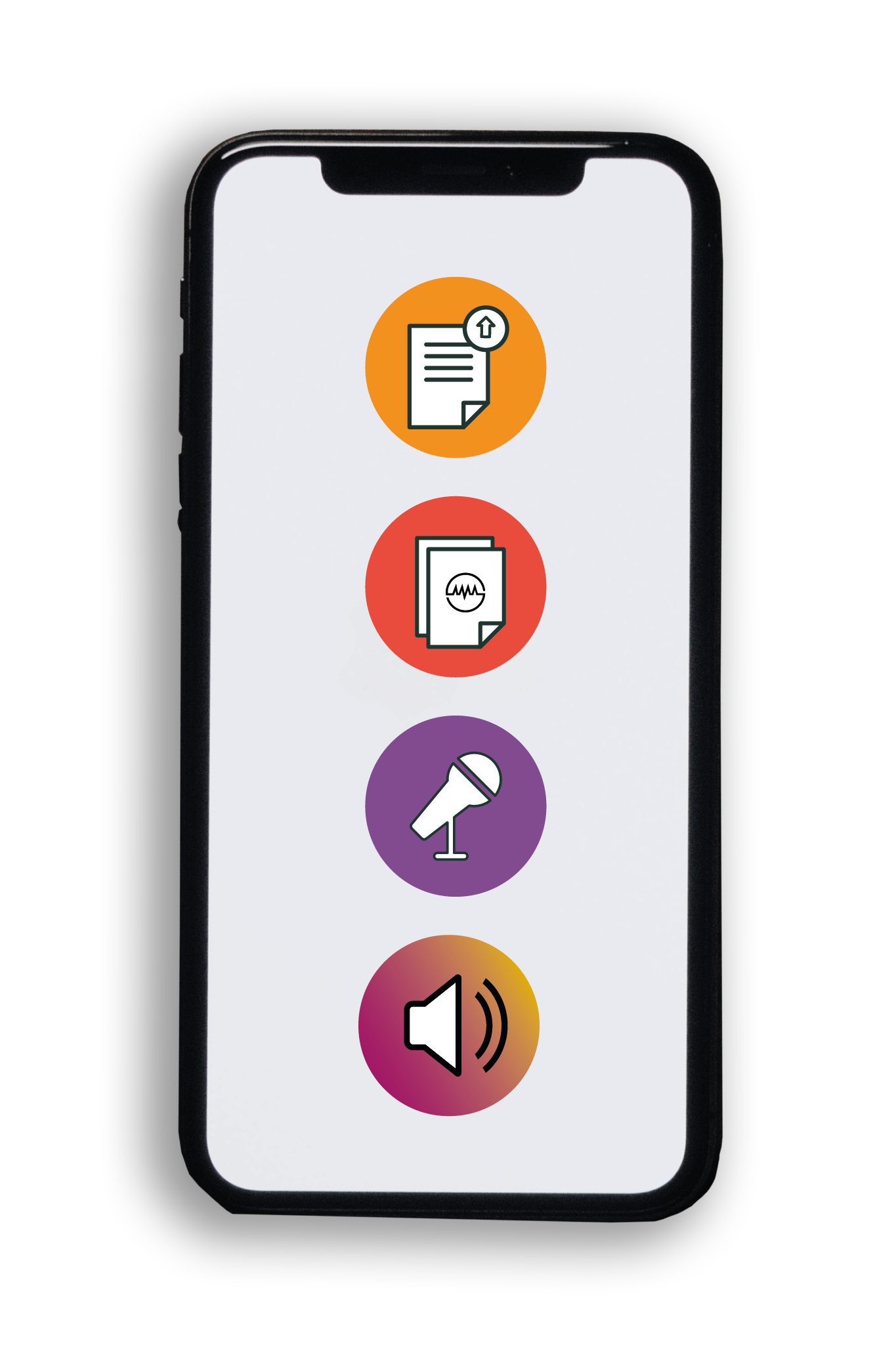
Step 1 Upload your science paper
Step 2 SciPod script written
Step 3 Voice audio recorded
Step 4 SciPod published
Hypnosis A Mind-Body Solution for Hot Flushes and Sleep Post-Menopause and in Breast Cancer Professor Gary Elkins, Baylor University
Hypnosis A Mind-Body Solution for Hot Flushes and Sleep Post-Menopause and in Breast Cancer Professor Gary Elkins, Baylor University
Original Article Reference
This SciPod is a summary of https://doi.org/10.33548/SCIENTIA545
Share Episode
About this episode
Professor Gary Elkins at Baylor University, Texas, is a leading expert on complementary and integrative medicine and clinical hypnotherapy. Here, we review his extensive contribution to science in the field of innovative mind-body interventions for symptoms associated with breast cancer and menopause (including the symptoms of hot flushes, sleep, anxiety, quality of life), and women’s health care in general.
This work is licensed under a Creative Commons Attribution 4.0 International License. 
What does this mean?
Share: You can copy and redistribute the material in any medium or format
Adapt: You can change, and build upon the material for any purpose, even commercially.
Credit: You must give appropriate credit, provide a link to the license, and indicate if changes were made.
More episodes
Increase the impact of your research
• Good science communication helps people make informed decisions and motivates them to take appropriate and affirmative action.
• Good science communication encourages everyday people to be scientifically literate so that they can analyse the integrity and legitimacy of information.
• Good science communication encourages people into STEM-related fields of study and employment.
• Good public science communication fosters a community around research that includes both members of the public, policymakers and scientists.
• In a recent survey, 75% of people suggested they would prefer to listen to an interesting story than read it.

Step 1 Upload your science paper
Step 2 SciPod script written
Step 3 Voice audio recorded
Step 4 SciPod published
A Twin DNA Replication Factory – Professor Michael O’Donnell, Rockefeller University
A Twin DNA Replication Factory – Professor Michael O’Donnell, Rockefeller University
Original Article Reference
This SciPod is a summary of https://doi.org/10.33548/SCIENTIA546
Share Episode
About this episode
For life on Earth to grow, its genetic material must be copied and reproduced in a process known as DNA replication. Professor Michael O’Donnell, head of the Rockefeller University’s DNA replication laboratory, has devoted his over 30-year career to the study of the protein complex that is responsible for just that – the replisome. Recently, Professor O’Donnell and his team uncovered exciting insights into the function of this remarkable piece of molecular machinery.
This work is licensed under a Creative Commons Attribution 4.0 International License. 
What does this mean?
Share: You can copy and redistribute the material in any medium or format
Adapt: You can change, and build upon the material for any purpose, even commercially.
Credit: You must give appropriate credit, provide a link to the license, and indicate if changes were made.
More episodes
Increase the impact of your research
• Good science communication helps people make informed decisions and motivates them to take appropriate and affirmative action.
• Good science communication encourages everyday people to be scientifically literate so that they can analyse the integrity and legitimacy of information.
• Good science communication encourages people into STEM-related fields of study and employment.
• Good public science communication fosters a community around research that includes both members of the public, policymakers and scientists.
• In a recent survey, 75% of people suggested they would prefer to listen to an interesting story than read it.

Step 1 Upload your science paper
Step 2 SciPod script written
Step 3 Voice audio recorded
Step 4 SciPod published
The Antigen-specific Immune Response Against Malaria Acquired During Foetal Development – Dr Samuel Tassi Yunga, University of Hawaii at Manoa
The Antigen-specific Immune Response Against Malaria Acquired During Foetal Development – Dr Samuel Tassi Yunga, University of Hawaii at Manoa
Original Article Reference
This SciPod is a summary of ‘Timing of the human prenatal antibody response to Plasmodium falciparum antigens’ published in the open access journal PLOS ONE.
https://doi.org/10.1371/journal.pone.0184571
Share Episode
About this episode
It is currently unknown at what point during development a human foetus can recognise antigens as foreign and produce an acquired immune response. The foetus is not usually exposed to pathogens but remains relatively protected in the uterus by the placenta, and contact with allergens, viral antigens, and so on, is fairly rare. Malaria, however, causes significant placental infection and inflammation. In regions where malaria is endemic, the foetus can be exposed to malaria parasites and their antigens from their infected mothers repeatedly during pregnancy. Dr Samuel Tassi Yunga and his collaborators from The University of Hawaii at Manoa in the USA, and the Biotechnology Center in Yaounde Cameroon, recently analysed the levels of antibodies against Plasmodium falciparum in newborn Cameroonian babies to determine the timing of antibody response during prenatal development. Results provide both basic and clinically relevant information.
This work is licensed under a Creative Commons Attribution 4.0 International License. 
What does this mean?
Share: You can copy and redistribute the material in any medium or format
Adapt: You can change, and build upon the material for any purpose, even commercially.
Credit: You must give appropriate credit, provide a link to the license, and indicate if changes were made.
More episodes
Increase the impact of your research
• Good science communication helps people make informed decisions and motivates them to take appropriate and affirmative action.
• Good science communication encourages everyday people to be scientifically literate so that they can analyse the integrity and legitimacy of information.
• Good science communication encourages people into STEM-related fields of study and employment.
• Good public science communication fosters a community around research that includes both members of the public, policymakers and scientists.
• In a recent survey, 75% of people suggested they would prefer to listen to an interesting story than read it.

Step 1 Upload your science paper
Step 2 SciPod script written
Step 3 Voice audio recorded
Step 4 SciPod published
Sugar Monoesters as Absorption Enhancers for Orally-Delivered Large Pharmaceuticals – Professor David J. Brayden, University College Dublin
Sugar Monoesters as Absorption Enhancers for Orally-Delivered Large Pharmaceuticals – Professor David J. Brayden, University College Dublin
Original Article Reference
This SciPod is a summary of the paper ‘Permeability-enhancing effects of three laurate-disaccharide monoesters across isolated rat intestinal mucosae’, published with Open Access for readers in the International Journal of Pharmaceutics. https://doi.org/10.1016/j.ijpharm.2021.120593
Share Episode
About this episode
The lining of the gut acts naturally as a protective barrier to harmful or oversized materials. Many orally-administered drugs consisting of macromolecules or peptides are difficult to deliver because of their poor permeability across the intestine resulting in failure to reach the bloodstream. Patient preference would be to take these types of medicines orally rather than the currently available delivery route of injections. Professor David J. Brayden, at University College Dublin, is dedicated to enhancing the oral delivery of peptides and other macromolecules. His team and collaborators are conducting cutting edge research on the effects of specific sugar-based monoesters as intestinal permeation enhancers.
This work is licensed under a Creative Commons Attribution 4.0 International License. 
What does this mean?
Share: You can copy and redistribute the material in any medium or format
Adapt: You can change, and build upon the material for any purpose, even commercially.
Credit: You must give appropriate credit, provide a link to the license, and indicate if changes were made.
More episodes
Increase the impact of your research
• Good science communication helps people make informed decisions and motivates them to take appropriate and affirmative action.
• Good science communication encourages everyday people to be scientifically literate so that they can analyse the integrity and legitimacy of information.
• Good science communication encourages people into STEM-related fields of study and employment.
• Good public science communication fosters a community around research that includes both members of the public, policymakers and scientists.
• In a recent survey, 75% of people suggested they would prefer to listen to an interesting story than read it.

Step 1 Upload your science paper
Step 2 SciPod script written
Step 3 Voice audio recorded
Step 4 SciPod published
Cultivating a New Generation of Biomedical Entrepreneurs
Cultivating a New Generation of Biomedical Entrepreneurs
Original Article Reference
This SciPod is a summary of the paper:
Share Episode
About this episode
In recent years, scientific and technological advances have brought great innovation within the life sciences industry, introducing the need for entrepreneurship training for medical and engineering graduates. With this in mind, Michal Gilon-Yanai, Dr Robert Schneider and their collaborators developed an academic program designed to provide students and faculty members with the skills they need to become successful entrepreneurs. The team of collaborators includes Dr Gabrielle Gold-von Simson, an expert in implementing academic programs, and Dr Colleen Gillespie, who specialises in education, evaluation and dissemination science. Their pioneering program trains students on how to bring new biomedical technologies to the market.
This work is licensed under a Creative Commons Attribution 4.0 International License. 
What does this mean?
Share: You can copy and redistribute the material in any medium or format
Adapt: You can change, and build upon the material for any purpose, even commercially.
Credit: You must give appropriate credit, provide a link to the license, and indicate if changes were made.
Related episodes
Increase the impact of your research
• Good science communication helps people make informed decisions and motivates them to take appropriate and affirmative action.
• Good science communication encourages everyday people to be scientifically literate so that they can analyse the integrity and legitimacy of information.
• Good science communication encourages people into STEM-related fields of study and employment.
• Good public science communication fosters a community around research that includes both members of the public, policymakers and scientists.
• In a recent survey, 75% of people suggested they would prefer to listen to an interesting story than read it.

Step 1 Upload your science paper
Step 2 SciPod script written
Step 3 Voice audio recorded
Step 4 SciPod published
Socioeconomic Determinants of Covid-19 Infections and Mortality: Evidence from England and Wales
Socioeconomic Determinants of Covid-19 Infections and Mortality: Evidence from England and Wales
In Collaboration with
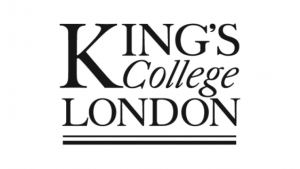
Original Article Reference
This SciPod is a summary of the paper
‘Socioeconomic determinants of Covid-19 infections and mortality: Evidence from England and Wales’, published by King’s Business School, King’s College London
Share Episode
About this episode
The number of deaths from Covid-19 in the UK was at one point the highest among European countries. To better understand this, Dr Filipa Sá at King’s College London combined data on the number of confirmed Covid-19 cases and the number of deaths from Covid-19 per 100,000 people for local areas in England and Wales with socioeconomic data to explore the factors influencing the numbers of infections and deaths.
Meet the researcher
Dr Filipa Sa
Reader of Economics & Public Policy
Contact details
Webpage: kclpure.kcl.ac.uk/portal/filipa.sa
E-mail: filipa.sa@kcl.ac.uk
ORCID: 0000-0002-1648-7429
Scopus Author ID: 8894873800
Division
More episodes from King’s College London
More resources from Kings’s
This work is licensed under a Creative Commons Attribution 4.0 International License. 
What does this mean?
Share: You can copy and redistribute the material in any medium or format
Adapt: You can change, and build upon the material for any purpose, even commercially.
Credit: You must give appropriate credit, provide a link to the license, and indicate if changes were made.
Polymorphisms in the Myostatin Gene Influence Muscle Fibre Composition and Race Distance Aptitude in Thoroughbred horses
Polymorphisms in the Myostatin Gene Influence Muscle Fibre Composition and Race Distance Aptitude in Thoroughbred horses
Original Article Reference
This SciPod is a summary of the papers:
‘The “speed gene” effect of myostatin arises in Thoroughbred horses due to a promoter proximal SINE insertion’ published in the open access journal PLOS One. https://doi.org/10.1371/journal.pone.0205664
‘Skeletal muscle mitochondrial bioenergetics and associations with myostatin genotypes in the
Thoroughbred horse’, also published in PLOS One. https://doi.org/10.1371/journal.pone.0186247
Share Episode
About this episode
The Thoroughbred is a horse breed best known for its use in racing. Intense selection for speed and stamina has led the Thoroughbred to develop energy-efficient muscles, with a high aerobic capacity relative to skeletal muscle mass. Dr Mary F. Rooney and her colleagues from University College Dublin and Trinity College Dublin, Ireland, investigated how different myostatin genotypes in equine muscle are correlated with muscle fibre composition and, ultimately, influence the race distance aptitude of the Thoroughbred horse.
This work is licensed under a Creative Commons Attribution 4.0 International License. 
What does this mean?
Share: You can copy and redistribute the material in any medium or format
Adapt: You can change, and build upon the material for any purpose, even commercially.
Credit: You must give appropriate credit, provide a link to the license, and indicate if changes were made.
More episodes
Increase the impact of your research
• Good science communication helps people make informed decisions and motivates them to take appropriate and affirmative action.
• Good science communication encourages everyday people to be scientifically literate so that they can analyse the integrity and legitimacy of information.
• Good science communication encourages people into STEM-related fields of study and employment.
• Good public science communication fosters a community around research that includes both members of the public, policymakers and scientists.
• In a recent survey, 75% of people suggested they would prefer to listen to an interesting story than read it.

Step 1 Upload your science paper
Step 2 SciPod script written
Step 3 Voice audio recorded
Step 4 SciPod published
Use of Experimental Medicine for Rational Development of an Effective HIV Vaccine – Professor Tomáš Hanke, University of Oxford
Use of Experimental Medicine for Rational Development of an Effective HIV Vaccine – Professor Tomáš Hanke, University of Oxford
Original Article Reference
This SciPod is a summary of the paper:
Share Episode
About this episode
The UNAIDS estimates that 38 million people currently live with human immunodeficiency virus (HIV) infection. Combination antiretroviral treatment has had great success in saving lives but is also associated with numerous medical and public health challenges. Vaccination remains the best and most cost-effective option for controlling HIV infection across the world. Professor Tomáš Hanke jointly from the University of Oxford, UK, and Kumamoto University, Japan, designs vaccines and coordinates clinical programmes testing the most advanced vaccine candidates developed by his team in the UK, Europe, USA and Africa.
This work is licensed under a Creative Commons Attribution 4.0 International License. 
What does this mean?
Share: You can copy and redistribute the material in any medium or format
Adapt: You can change, and build upon the material for any purpose, even commercially.
Credit: You must give appropriate credit, provide a link to the license, and indicate if changes were made.
Related episodes
Increase the impact of your research
• Good science communication helps people make informed decisions and motivates them to take appropriate and affirmative action.
• Good science communication encourages everyday people to be scientifically literate so that they can analyse the integrity and legitimacy of information.
• Good science communication encourages people into STEM-related fields of study and employment.
• Good public science communication fosters a community around research that includes both members of the public, policymakers and scientists.
• In a recent survey, 75% of people suggested they would prefer to listen to an interesting story than read it.

Step 1 Upload your science paper
Step 2 SciPod script written
Step 3 Voice audio recorded
Step 4 SciPod published
A Breakthrough in the War Against Basil Downy Mildew, Dr James Simon at Rutgers University
A Breakthrough in the War Against Basil Downy Mildew, Dr James Simon at Rutgers University
Original Article Reference
This SciPod is a summary of the paper:
Share Episode
About this episode
Sweet basil is among the most popular and economically important culinary herbs, but by 2010, US production began to feel the impact of a newly emerging destructive disease: basil downy mildew. At that time, no sweet basil varieties were resistant to basil downy mildew and growers began relying heavily on fungicide application to avoid devastating crop losses. Dr James Simon at Rutgers University had been researching basil for 25 years and was eager to tackle this problem. Eight years later, Dr Simon’s team is proud to have successfully developed 12 new downy mildew resistant varieties of sweet basil and two varieties resistant to fusarium wilt disease.
This work is licensed under a Creative Commons Attribution 4.0 International License. 
What does this mean?
Share: You can copy and redistribute the material in any medium or format
Adapt: You can change, and build upon the material for any purpose, even commercially.
Credit: You must give appropriate credit, provide a link to the license, and indicate if changes were made.
Related episodes
Increase the impact of your research
• Good science communication helps people make informed decisions and motivates them to take appropriate and affirmative action.
• Good science communication encourages everyday people to be scientifically literate so that they can analyse the integrity and legitimacy of information.
• Good science communication encourages people into STEM-related fields of study and employment.
• Good public science communication fosters a community around research that includes both members of the public, policymakers and scientists.
• In a recent survey, 75% of people suggested they would prefer to listen to an interesting story than read it.

Step 1 Upload your science paper
Step 2 SciPod script written
Step 3 Voice audio recorded
Step 4 SciPod published
Finding a Way Forward for Mid-size Farms – Dr Thomas Gray, USDA
Finding a Way Forward for Mid-size Farms – Dr Thomas Gray, USDA
Original Article Reference
This SciPod is a summary of the paper:
Share Episode
About this episode
More than 80% of agricultural land in the US is managed by farmers whose operations fall between small-scale farms with direct access to local markets, and larger industrialised farms. These farmers in the ‘middle’ increasingly struggle to find a place within the larger food production system. Through his work as part of the ‘Agriculture of the Middle’ Initiative, Dr Thomas Gray of the Rural Business-Cooperative Service at the US Department of Agriculture has been studying different types of cooperative structures for best adaptability to socio-economic and food consumption patterns for mid-size farm survival.
This work is licensed under a Creative Commons Attribution 4.0 International License. 
What does this mean?
Share: You can copy and redistribute the material in any medium or format
Adapt: You can change, and build upon the material for any purpose, even commercially.
Credit: You must give appropriate credit, provide a link to the license, and indicate if changes were made.
Related episodes
Increase the impact of your research
• Good science communication helps people make informed decisions and motivates them to take appropriate and affirmative action.
• Good science communication encourages everyday people to be scientifically literate so that they can analyse the integrity and legitimacy of information.
• Good science communication encourages people into STEM-related fields of study and employment.
• Good public science communication fosters a community around research that includes both members of the public, policymakers and scientists.
• In a recent survey, 75% of people suggested they would prefer to listen to an interesting story than read it.

Step 1 Upload your science paper
Step 2 SciPod script written
Step 3 Voice audio recorded
Step 4 SciPod published
Sounding the Right Note Integrating Music and STEM Teaching – Dr Tennille D. Presley, Winston-Salem State University
Sounding the Right Note Integrating Music and STEM Teaching – Dr Tennille D. Presley, Winston-Salem State University
Original Article Reference
This SciPod is a summary of the paper:
Share Episode
About this episode
Young people can often be discouraged from engaging with STEM subjects because they seem to have little obvious connection to their everyday lives. At Winston-Salem State University in North Carolina, an innovative program led by Dr Tennille D. Presley, is seeking to engage students by combining physics and biology with an art that is central to many students’ social lives: music. Early results from the program suggest that it has been successful in making science exciting and showing students that physics is involved in everything.
This work is licensed under a Creative Commons Attribution 4.0 International License. 
What does this mean?
Share: You can copy and redistribute the material in any medium or format
Adapt: You can change, and build upon the material for any purpose, even commercially.
Credit: You must give appropriate credit, provide a link to the license, and indicate if changes were made.
Related episodes
Increase the impact of your research
• Good science communication helps people make informed decisions and motivates them to take appropriate and affirmative action.
• Good science communication encourages everyday people to be scientifically literate so that they can analyse the integrity and legitimacy of information.
• Good science communication encourages people into STEM-related fields of study and employment.
• Good public science communication fosters a community around research that includes both members of the public, policymakers and scientists.
• In a recent survey, 75% of people suggested they would prefer to listen to an interesting story than read it.

Step 1 Upload your science paper
Step 2 SciPod script written
Step 3 Voice audio recorded
Step 4 SciPod published
Integrating Modelling and Machine Learning for Autonomous Robotics – Dr Paul Robertson, Dynamic Object Language Labs
Integrating Modelling and Machine Learning for Autonomous Robotics – Dr Paul Robertson, Dynamic Object Language Labs
Original Article Reference
This SciPod is a summary of the paper:
Share Episode
About this episode
Machine learning is rapidly advancing the decision-making capabilities of today’s computers, yet without an in-depth knowledge of the programming it involves, many engineers and researchers find current technology inaccessible. Dr Paul Robertson at Dynamic Object Language Labs (DOLL) in Massachusetts believes that a solution to the issue may have been hidden in plain sight: machine learning itself. His ideas have now culminated in ‘Pamela’: a universal, open-source language capable of modelling real-world systems, and building plans to overcome challenges. The language and its related tools could soon open up significant opportunities in the emerging field of artificial intelligence.
This work is licensed under a Creative Commons Attribution 4.0 International License. 
What does this mean?
Share: You can copy and redistribute the material in any medium or format
Adapt: You can change, and build upon the material for any purpose, even commercially.
Credit: You must give appropriate credit, provide a link to the license, and indicate if changes were made.
Related episodes
Increase the impact of your research
• Good science communication helps people make informed decisions and motivates them to take appropriate and affirmative action.
• Good science communication encourages everyday people to be scientifically literate so that they can analyse the integrity and legitimacy of information.
• Good science communication encourages people into STEM-related fields of study and employment.
• Good public science communication fosters a community around research that includes both members of the public, policymakers and scientists.
• In a recent survey, 75% of people suggested they would prefer to listen to an interesting story than read it.

Step 1 Upload your science paper
Step 2 SciPod script written
Step 3 Voice audio recorded
Step 4 SciPod published
Public Health Advocacy in the Fight Against Breast Cancer – Professor Janet Gray and Nancy Buermeyer
Public Health Advocacy in the Fight Against Breast Cancer – Professor Janet Gray and Nancy Buermeyer
Original Article Reference
This SciPod is a summary of the paper:
Share Episode
About this episode
Health advocacy is an often-overlooked part of the work of public health specialists, but in many ways, it can be argued to have the greatest long-term impact on the population’s health. Here we look at the impressive work of Professor Janet Gray (Vassar College) and Public Policy Strategist Ms Nancy Buermeyer, working with colleagues at Breast Cancer Prevention Partners, the leading USA science-based policy and advocacy organisation to focus on preventing breast cancer by eliminating exposure to toxic chemicals and radiation linked to the disease.
This work is licensed under a Creative Commons Attribution 4.0 International License. 
What does this mean?
Share: You can copy and redistribute the material in any medium or format
Adapt: You can change, and build upon the material for any purpose, even commercially.
Credit: You must give appropriate credit, provide a link to the license, and indicate if changes were made.
More episodes
Increase the impact of your research
• Good science communication helps people make informed decisions and motivates them to take appropriate and affirmative action.
• Good science communication encourages everyday people to be scientifically literate so that they can analyse the integrity and legitimacy of information.
• Good science communication encourages people into STEM-related fields of study and employment.
• Good public science communication fosters a community around research that includes both members of the public, policymakers and scientists.
• In a recent survey, 75% of people suggested they would prefer to listen to an interesting story than read it.

Step 1 Upload your science paper
Step 2 SciPod script written
Step 3 Voice audio recorded
Step 4 SciPod published
Increasing Income Equality During Slow or No Economic Growth – Dr Tilman Hartley, Autonomous University of Barcelona
Increasing Income Equality During Slow or No Economic Growth – Dr Tilman Hartley, Autonomous University of Barcelona
Original Article Reference
This SciPod is a summary of the paper ‘Policies for Equality Under Low or No Growth: A Model Inspired by Piketty’, from Review of Political Economy.
Share Episode
About this episode
When the incomes of wealthy individuals and companies grow faster than the economy itself, income inequality rises in society. However, industrialised economies such as the UK and Germany have experienced sustained declines in growth, and policies to promote economic growth often clash with environmental sustainability. Therefore, economists are attempting to find solutions for decreasing income inequality without the need to stimulate economic growth. In a recent paper, Dr Tilman Hartley at the Autonomous University of Barcelona and his collaborators outline policy interventions that can improve income equality during periods of slow or no growth.
This work is licensed under a Creative Commons Attribution 4.0 International License. 
What does this mean?
Share: You can copy and redistribute the material in any medium or format
Adapt: You can change, and build upon the material for any purpose, even commercially.
Credit: You must give appropriate credit, provide a link to the license, and indicate if changes were made.
More episodes
Increase the impact of your research
• Good science communication helps people make informed decisions and motivates them to take appropriate and affirmative action.
• Good science communication encourages everyday people to be scientifically literate so that they can analyse the integrity and legitimacy of information.
• Good science communication encourages people into STEM-related fields of study and employment.
• Good public science communication fosters a community around research that includes both members of the public, policymakers and scientists.
• In a recent survey, 75% of people suggested they would prefer to listen to an interesting story than read it.

Step 1 Upload your science paper
Step 2 SciPod script written
Step 3 Voice audio recorded
Step 4 SciPod published
Studying Meditation-related Challenges in Western Buddhism -Dr Willoughby B. Britton, Brown University
Studying Meditation-related Challenges in Western Buddhism -Dr Willoughby B. Britton, Brown University
Original Article Reference
This SciPod is a summary of the paper ‘The varieties of contemplative experience: A mixed-methods study of meditation-related challenges in Western Buddhists, from the open access journal PLoS One. https://doi.org/10.1371/journal.pone.0176239
Share Episode
About this episode
Buddhist-derived meditation is becoming increasingly recognised as being able to promote physical, emotional, and mental health in the Western world. Although an extensive literature supports the many benefits of meditation, the adverse effects remain underreported. The Varieties of Contemplative Experience study was initiated by Dr Willoughby B. Britton at Brown University, Rhode Island, to investigate the potentially darker side of meditation.
This work is licensed under a Creative Commons Attribution 4.0 International License. 
What does this mean?
Share: You can copy and redistribute the material in any medium or format
Adapt: You can change, and build upon the material for any purpose, even commercially.
Credit: You must give appropriate credit, provide a link to the license, and indicate if changes were made.
More episodes
Increase the impact of your research
• Good science communication helps people make informed decisions and motivates them to take appropriate and affirmative action.
• Good science communication encourages everyday people to be scientifically literate so that they can analyse the integrity and legitimacy of information.
• Good science communication encourages people into STEM-related fields of study and employment.
• Good public science communication fosters a community around research that includes both members of the public, policymakers and scientists.
• In a recent survey, 75% of people suggested they would prefer to listen to an interesting story than read it.

Step 1 Upload your science paper
Step 2 SciPod script written
Step 3 Voice audio recorded
Step 4 SciPod published
Reducing Atmospheric Carbon Dioxide Through Direct Air Capture – Dr Radu Custelcean, Oak Ridge National Laboratory
Reducing Atmospheric Carbon Dioxide Through Direct Air Capture – Dr Radu Custelcean, Oak Ridge National Laboratory
Original Article Reference
This SciPod is a summary of the paper:
Share Episode
About this episode
Climate change is mostly the result of elevated carbon dioxide emissions. Over the past two decades, research groups have been searching for new technologies that capture carbon dioxide from the atmosphere as an effective way of reversing climate change. Dr Radu Custelcean and his colleagues at the Oak Ridge National Laboratory in the US specialise in this endeavour. The team is developing novel materials and methods that filter carbon dioxide out of the air in an energy-efficient manner.
This work is licensed under a Creative Commons Attribution 4.0 International License. 
What does this mean?
Share: You can copy and redistribute the material in any medium or format
Adapt: You can change, and build upon the material for any purpose, even commercially.
Credit: You must give appropriate credit, provide a link to the license, and indicate if changes were made.
Related episodes
Increase the impact of your research
• Good science communication helps people make informed decisions and motivates them to take appropriate and affirmative action.
• Good science communication encourages everyday people to be scientifically literate so that they can analyse the integrity and legitimacy of information.
• Good science communication encourages people into STEM-related fields of study and employment.
• Good public science communication fosters a community around research that includes both members of the public, policymakers and scientists.
• In a recent survey, 75% of people suggested they would prefer to listen to an interesting story than read it.

Step 1 Upload your science paper
Step 2 SciPod script written
Step 3 Voice audio recorded
Step 4 SciPod published
Harnessing Big Data to Identify Ideal Locations for Warehouses and Bike Share Stations – Dr Hui Xiong, Rutgers University
Harnessing Big Data to Identify Ideal Locations for Warehouses and Bike Share Stations – Dr Hui Xiong, Rutgers University
Original Article Reference
This SciPod is a summary of the paper:
Share Episode
About this episode
With a sharp increase in the public use of online shopping in recent years, which has spiked further due to the COVID-19 pandemic, the importance of warehouse positioning to provide an optimal delivery service has become a significant area of focus for retailers. Similarly, bike sharing in major cities has also seen an astronomical rise in usage – prompting questions about how bike stations can be best positioned. Stations in optimised locations would require minimal interference to change the stock levels, while also ensuring the greatest accessibility to users. Dr Xiong and his colleagues at Rutgers University have been using the ubiquity of big data to better optimise these systems for both cost efficiency and standard of service to customers, testing their findings in real-world scenarios.
This work is licensed under a Creative Commons Attribution 4.0 International License. 
What does this mean?
Share: You can copy and redistribute the material in any medium or format
Adapt: You can change, and build upon the material for any purpose, even commercially.
Credit: You must give appropriate credit, provide a link to the license, and indicate if changes were made.
Related episodes
Increase the impact of your research
• Good science communication helps people make informed decisions and motivates them to take appropriate and affirmative action.
• Good science communication encourages everyday people to be scientifically literate so that they can analyse the integrity and legitimacy of information.
• Good science communication encourages people into STEM-related fields of study and employment.
• Good public science communication fosters a community around research that includes both members of the public, policymakers and scientists.
• In a recent survey, 75% of people suggested they would prefer to listen to an interesting story than read it.

Step 1 Upload your science paper
Step 2 SciPod script written
Step 3 Voice audio recorded
Step 4 SciPod published
How Ought the Law to Deal with Implanted Medical Devices – Professor Muireann Quigley, University of Birmingham
How Ought the Law to Deal with Implanted Medical Devices – Professor Muireann Quigley, University of Birmingham
Original Article Reference
This SciPod is a summary of the paper:
Share Episode
About this episode
Attached and implanted technologies are now part of everyday life for many millions of people. Yet as the capabilities of these devices have advanced rapidly in recent years, lawmakers have struggled to keep pace. Professor Muireann Quigley at the University of Birmingham believes that it is now more critical than ever that the law catches up with the technological and social change wrought by attached and implanted medical devices, especially ‘smart’ ones. Through the Everyday Cyborgs 2.0 and DIY Diabetes projects, she and her colleagues hope to bring law, regulation, and policy regarding these technologies into the 21st century.
This work is licensed under a Creative Commons Attribution 4.0 International License. 
What does this mean?
Share: You can copy and redistribute the material in any medium or format
Adapt: You can change, and build upon the material for any purpose, even commercially.
Credit: You must give appropriate credit, provide a link to the license, and indicate if changes were made.
Related episodes
Increase the impact of your research
• Good science communication helps people make informed decisions and motivates them to take appropriate and affirmative action.
• Good science communication encourages everyday people to be scientifically literate so that they can analyse the integrity and legitimacy of information.
• Good science communication encourages people into STEM-related fields of study and employment.
• Good public science communication fosters a community around research that includes both members of the public, policymakers and scientists.
• In a recent survey, 75% of people suggested they would prefer to listen to an interesting story than read it.

Step 1 Upload your science paper
Step 2 SciPod script written
Step 3 Voice audio recorded
Step 4 SciPod published
Unfurling the Mystery of Plant Chromosome Numbers – Dr Paul Wolf, University of Alabama
Unfurling the Mystery of Plant Chromosome Numbers – Dr Paul Wolf, University of Alabama
Original Article Reference
This SciPod is a summary of the paper:
Share Episode
About this episode
Plants are more tolerant of changes in their chromosome number than animals. Even dramatic changes, such as doubling of the entire genome, sometimes leads to beneficial outcomes. Though a history of genome doubling is common in most plants, the chromosome number in many plants does not reflect this. Complex genome downsizing processes help these plants shed extra genetic information, but are poorly understood. Through comparisons with ferns – a group with high chromosome numbers – Dr Paul Wolf from the University of Alabama in Huntsville aims to shed light on genome downsizing.
This work is licensed under a Creative Commons Attribution 4.0 International License. 
What does this mean?
Share: You can copy and redistribute the material in any medium or format
Adapt: You can change, and build upon the material for any purpose, even commercially.
Credit: You must give appropriate credit, provide a link to the license, and indicate if changes were made.
Related episodes
Increase the impact of your research
• Good science communication helps people make informed decisions and motivates them to take appropriate and affirmative action.
• Good science communication encourages everyday people to be scientifically literate so that they can analyse the integrity and legitimacy of information.
• Good science communication encourages people into STEM-related fields of study and employment.
• Good public science communication fosters a community around research that includes both members of the public, policymakers and scientists.
• In a recent survey, 75% of people suggested they would prefer to listen to an interesting story than read it.

Step 1 Upload your science paper
Step 2 SciPod script written
Step 3 Voice audio recorded
Step 4 SciPod published
Saving Tropical Forests Through International Research Collaboration -Dr Peter Beck and Dr Michael Wasserman
Saving Tropical Forests Through International Research Collaboration -Dr Peter Beck and Dr Michael Wasserman
Original Article Reference
This SciPod is a summary of the paper:
Share Episode
About this episode
Tropical forests are some of the most biodiverse ecosystems on the planet, but extensive deforestation has pushed many species to the brink of extinction. Conservation efforts have been limited by political and socioeconomic backgrounds of each region. By integrating ecological and social research techniques, Dr Peter Beck at St Edward’s University, Dr Michael Wasserman of Indiana University and their colleagues examine the effectiveness of tropical forest conservation strategies and the factors that encourage people to conserve their forests. Their extensive project also provides international research experience to STEM students from underrepresented backgrounds, and helps foster scientific and cultural exchange between countries.
This work is licensed under a Creative Commons Attribution 4.0 International License. 
What does this mean?
Share: You can copy and redistribute the material in any medium or format
Adapt: You can change, and build upon the material for any purpose, even commercially.
Credit: You must give appropriate credit, provide a link to the license, and indicate if changes were made.
Related episodes
Increase the impact of your research
• Good science communication helps people make informed decisions and motivates them to take appropriate and affirmative action.
• Good science communication encourages everyday people to be scientifically literate so that they can analyse the integrity and legitimacy of information.
• Good science communication encourages people into STEM-related fields of study and employment.
• Good public science communication fosters a community around research that includes both members of the public, policymakers and scientists.
• In a recent survey, 75% of people suggested they would prefer to listen to an interesting story than read it.

Step 1 Upload your science paper
Step 2 SciPod script written
Step 3 Voice audio recorded
Step 4 SciPod published
New Frontiers of Sound A Quiet Revolution
New Frontiers of Sound A Quiet Revolution
Original Article Reference
This SciPod is a summary of the paper:
Share Episode
About this episode
Sound waves are all around us. They govern vibrations from the sweetest of sound to the most destructive earthquakes. Now, a team of researchers across the US has embarked on an ambitious project, named ‘New Frontiers of Sound’, which will pave the way for advanced technologies that operate using sound waves. Combining the expertise of more than 30 leading scientists and engineers from across the field of acoustics, the project promises to discover new properties of sound, while offering exciting opportunities for researchers from a diverse range of backgrounds.
This work is licensed under a Creative Commons Attribution 4.0 International License. 
What does this mean?
Share: You can copy and redistribute the material in any medium or format
Adapt: You can change, and build upon the material for any purpose, even commercially.
Credit: You must give appropriate credit, provide a link to the license, and indicate if changes were made.
Related episodes
Increase the impact of your research
• Good science communication helps people make informed decisions and motivates them to take appropriate and affirmative action.
• Good science communication encourages everyday people to be scientifically literate so that they can analyse the integrity and legitimacy of information.
• Good science communication encourages people into STEM-related fields of study and employment.
• Good public science communication fosters a community around research that includes both members of the public, policymakers and scientists.
• In a recent survey, 75% of people suggested they would prefer to listen to an interesting story than read it.

Step 1 Upload your science paper
Step 2 SciPod script written
Step 3 Voice audio recorded
Step 4 SciPod published
Dr Bruno Basso – Improving Agricultural Sustainability with Digital Technology
Dr Bruno Basso – Improving Agricultural Sustainability with Digital Technology
Original Article Reference
This SciPod is a summary of the paper:
Share Episode
About this episode
In recent decades, advancements in agricultural practices have made the large-scale production of cheap and nutritious food possible. However, these practices are often damaging to the environment, making them unsustainable in the long term. Technology is now sufficiently developed that many of these environmental impacts can be reduced or mitigated, by using ‘big data’ to inform farming management decisions. Dr Bruno Basso from Michigan State University and his network of researchers have been exploring how digital technologies could usher in a new era of sustainable agriculture that balances competing economic and social interests while minimising trade-offs.
This work is licensed under a Creative Commons Attribution 4.0 International License. 
What does this mean?
Share: You can copy and redistribute the material in any medium or format
Adapt: You can change, and build upon the material for any purpose, even commercially.
Credit: You must give appropriate credit, provide a link to the license, and indicate if changes were made.
Related episodes
Increase the impact of your research
• Good science communication helps people make informed decisions and motivates them to take appropriate and affirmative action.
• Good science communication encourages everyday people to be scientifically literate so that they can analyse the integrity and legitimacy of information.
• Good science communication encourages people into STEM-related fields of study and employment.
• Good public science communication fosters a community around research that includes both members of the public, policymakers and scientists.
• In a recent survey, 75% of people suggested they would prefer to listen to an interesting story than read it.

Step 1 Upload your science paper
Step 2 SciPod script written
Step 3 Voice audio recorded
Step 4 SciPod published
Dr Ken Overturf – Securing a Sustainable Future for Aquaculture
Dr Ken Overturf – Securing a Sustainable Future for Aquaculture
Original Article Reference
This SciPod is a summary of the paper:
Share Episode
About this episode
To help feed a global population of the magnitude expected by 2050, fish farming will need to increase dramatically. Two main factors limiting the expansion and future sustainability of the aquaculture industry are finding feed replacements that have equivalent or improved nutritional benefits, and preventing disease. Over the last 20 years, Dr Ken Overturf and his team at the USDA’s Agricultural Research Service in collaboration with the Aquaculture Research Institute at the University of Idaho have been working to establish a genetic enhancement program for rainbow trout, with the aim of helping to boost global fish production in a sustainable manner.
This work is licensed under a Creative Commons Attribution 4.0 International License. 
What does this mean?
Share: You can copy and redistribute the material in any medium or format
Adapt: You can change, and build upon the material for any purpose, even commercially.
Credit: You must give appropriate credit, provide a link to the license, and indicate if changes were made.
Related episodes
Increase the impact of your research
• Good science communication helps people make informed decisions and motivates them to take appropriate and affirmative action.
• Good science communication encourages everyday people to be scientifically literate so that they can analyse the integrity and legitimacy of information.
• Good science communication encourages people into STEM-related fields of study and employment.
• Good public science communication fosters a community around research that includes both members of the public, policymakers and scientists.
• In a recent survey, 75% of people suggested they would prefer to listen to an interesting story than read it.

Step 1 Upload your science paper
Step 2 SciPod script written
Step 3 Voice audio recorded
Step 4 SciPod published
Joints, Ventricles and Historical Buildings A Diverse Career with Structural Mechanics – Dr Nigel Shrive, University of Calgary
Joints, Ventricles and Historical Buildings A Diverse Career with Structural Mechanics – Dr Nigel Shrive, University of Calgary
Original Article Reference
This SciPod is a summary of the paper:
Share Episode
About this episode
Engineering mechanics can provide medical researchers with invaluable insights into the diverse mechanisms contained within the human body, and the conditions that arise when they go wrong. Over a career spanning four decades, Dr Nigel Shrive at the University of Calgary has offered significant contributions to this field. His research is now helping to improve the lives of many millions of people who are currently suffering from mechanical failure within the body. Elsewhere, his work has also enabled countries to protect their priceless historical heritage.
This work is licensed under a Creative Commons Attribution 4.0 International License. 
What does this mean?
Share: You can copy and redistribute the material in any medium or format
Adapt: You can change, and build upon the material for any purpose, even commercially.
Credit: You must give appropriate credit, provide a link to the license, and indicate if changes were made.
Related episodes
Increase the impact of your research
• Good science communication helps people make informed decisions and motivates them to take appropriate and affirmative action.
• Good science communication encourages everyday people to be scientifically literate so that they can analyse the integrity and legitimacy of information.
• Good science communication encourages people into STEM-related fields of study and employment.
• Good public science communication fosters a community around research that includes both members of the public, policymakers and scientists.
• In a recent survey, 75% of people suggested they would prefer to listen to an interesting story than read it.

Step 1 Upload your science paper
Step 2 SciPod script written
Step 3 Voice audio recorded
Step 4 SciPod published
A Personalised Mathematical Model for Anaemia in Patients with Chronic Kidney Disease – Dr Doris H. Fuertinger, Fresenius Medical Care
A Personalised Mathematical Model for Anaemia in Patients with Chronic Kidney Disease – Dr Doris H. Fuertinger, Fresenius Medical Care
Original Article Reference
This SciPod is a summary of the paper ‘Prediction of haemoglobin levels in individual hemodialysis patients by means of a mathematical model of erythropoesis’, from the open access journal PLOS ONE: https://doi.org/10.1371/journal.pone.0195918
Share Episode
About this episode
Individuals with chronic kidney disease commonly also suffer from renal anaemia. Renal anaemia, a condition in which individuals lack enough red blood cells to adequately supply oxygen to the tissue, can have many underlying causes. Treatment is based on hormones that stimulate the production of red blood cells but this has varying outcomes and it is difficult to estimate the effects treatment will have on a specific patient. Dr Doris H. Fuertinger at Fresenius Medical Care Deutschland is using a mathematical model to predict the causes of renal anaemia and to guide treatment for individual patients.
This work is licensed under a Creative Commons Attribution 4.0 International License. 
What does this mean?
Share: You can copy and redistribute the material in any medium or format
Adapt: You can change, and build upon the material for any purpose, even commercially.
Credit: You must give appropriate credit, provide a link to the license, and indicate if changes were made.
Related episodes
Increase the impact of your research
• Good science communication helps people make informed decisions and motivates them to take appropriate and affirmative action.
• Good science communication encourages everyday people to be scientifically literate so that they can analyse the integrity and legitimacy of information.
• Good science communication encourages people into STEM-related fields of study and employment.
• Good public science communication fosters a community around research that includes both members of the public, policymakers and scientists.
• In a recent survey, 75% of people suggested they would prefer to listen to an interesting story than read it.

Step 1 Upload your science paper
Step 2 SciPod script written
Step 3 Voice audio recorded
Step 4 SciPod published
Assessing the Relevance of Off-Target Changes in Gene Edited Crops
Assessing the Relevance of Off-Target Changes in Gene Edited Crops
Original Article Reference
This SciPod is a summary of the paper ‘Plant genome editing and the relevance of off-target changes’, from Plant Physiology. https://doi.org/10.1104/pp.19.01194
Conflict of interest and funding disclosures
Some of the authors are employees of Corteva Agriscience (A. Gutsche, G. May. D. Bubeck, S. Kumar), Bayer Crop Science (K Glenn, R. Dobert, M. Vega-Sanchez), HM Clause (J. Lindbo), Enza Zaden (L. Maas), or Pairwise (N. Graham), which are companies involved in targeted genetic modification of plants; all these authors were provided financial support in the form of author’s salaries. R. Stupar is a co-inventor of a patent in the plant gene-editing space. All other authors report no conflicts of interest relevant to this article (G. Patil, P. Morrell). The publication was partially supported by U.S. Department of Agriculture/National Institute of Food and Agriculture grants 2015–33522–24096 and 2019–33522–30200. The production of SciPod was commissioned by Bayer Crop Science.
Share Episode
About this episode
Humans have a long history of developing crops with improved characteristics, benefitting consumers, and farmers alike. Selective breeding, inducing genetic mutations, and, more recently, gene editing, are all tools that are used to produce plants with beneficial traits. As with any breeding technique, gene editing can lead to unintended genetic changes, but how does the prevalence of these off-target changes compare with those arising from other breeding practices? Plant scientists from the University of Minnesota and collaborating organizations reviewed the rate of unintended changes arising from gene editing with those from other plant development techniques. The researchers conclude that off-target edits in crops present no new safety concerns compared to unintended genetic changes that occur using other breeding techniques.
This work is licensed under a Creative Commons Attribution 4.0 International License. 
What does this mean?
Share: You can copy and redistribute the material in any medium or format
Adapt: You can change, and build upon the material for any purpose, even commercially.
Credit: You must give appropriate credit, provide a link to the license, and indicate if changes were made.
Related episodes
Increase the impact of your research
• Good science communication helps people make informed decisions and motivates them to take appropriate and affirmative action.
• Good science communication encourages everyday people to be scientifically literate so that they can analyse the integrity and legitimacy of information.
• Good science communication encourages people into STEM-related fields of study and employment.
• Good public science communication fosters a community around research that includes both members of the public, policymakers and scientists.
• In a recent survey, 75% of people suggested they would prefer to listen to an interesting story than read it.

Step 1 Upload your science paper
Step 2 SciPod script written
Step 3 Voice audio recorded
Step 4 SciPod published
Emerging Treatment Options in Inflammatory Bowel Disease
Emerging Treatment Options in Inflammatory Bowel Disease
In Collaboration With

Original Article Reference
This SciPod is a shortened and simplified summary of ‘Emerging Treatment Options in Inflammatory Bowel Disease’, published by Karger Publishers https://doi.org/10.1159/000507782
The complete original works are available at www.karger.com
Share Episode
About this episode
Inflammatory bowel disease (IBD) is a group of gastrointestinal conditions affecting almost 7 million people globally, and this incidence is rising. While treatments have improved over the last century, many patients do not respond sufficiently, especially those with moderate to severe levels of the disease. Novel drugs that restrain the immune system and reduce inflammation are being developed with the hope of improving patient outcomes. Dr Benjamin Misselwitz at Island Hospital of Bern and Bern University and his colleagues have conducted a comprehensive review of the emerging therapies and make recommendations for improving treatment for a wider range of patients.
This work is licensed under a Creative Commons Attribution 4.0 International License. 
What does this mean?
Share: You can copy and redistribute the material in any medium or format
Adapt: You can change, and build upon the material for any purpose, even commercially.
Credit: You must give appropriate credit, provide a link to the license, and indicate if changes were made.
Related episodes
Multiple Sclerosis Fast Facts
Multiple Sclerosis Fast Facts
In Collaboration With

Original Article Reference
This SciPod is a shortened and simplified summary of ‘Fast Facts: Multiple Sclerosis’ published by Karger Publishers: ISBN 978-1-910797-23-5
The complete original works are available at www.karger.com
Share Episode
Short on time? watch this 3 minute video
About this episode
Multiple sclerosis (MS) is a progressive disease of the nervous system resulting from the inflammation and degeneration of nerves. In developed countries, MS is the primary cause of neurological disability in young and middle-aged people. Worldwide, MS affects an estimated 2.3 million. The cause is unknown and although factors that may increase risk have been identified, attempts to curb disease progression have so far met with failure. However, we are at a turning point in scientific advancement with the emergence of promising new therapies that could help us shift the odds in our favor against this devastating disease.
Related episodes
This work is licensed under a Creative Commons Attribution 4.0 International License. 
What does this mean?
Share: You can copy and redistribute the material in any medium or format
Adapt: You can change, and build upon the material for any purpose, even commercially.
Credit: You must give appropriate credit, provide a link to the license, and indicate if changes were made.
AI and Data Mining for Smart Manufacturing – Dr Timothy Young, The University of Tennessee
AI and Data Mining for Smart Manufacturing – Dr Timothy Young, The University of Tennessee
Original Article Reference
This SciPod is a summary of the paper ‘AI and Data Mining for Smart Manufacturing’ https://doi.org/10.1007/s10531-018-1614-y
Share Episode
About this episode
Big data is now central to the operation of many online companies, but until now, the wealth of information it provides has remained largely untapped by manufacturers. Dr Tim Young at the University of Tennessee believes that through data science, this information could be used to significantly streamline the operations of many manufacturing industries. His work provides the widely varied parties involved in these processes with important new insights into how they should handle their data, ultimately helping them to improve the efficiency of their operations.
This work is licensed under a Creative Commons Attribution 4.0 International License. 
What does this mean?
Share: You can copy and redistribute the material in any medium or format
Adapt: You can change, and build upon the material for any purpose, even commercially.
Credit: You must give appropriate credit, provide a link to the license, and indicate if changes were made.
Related episodes
Increase the impact of your research
• Good science communication helps people make informed decisions and motivates them to take appropriate and affirmative action.
• Good science communication encourages everyday people to be scientifically literate so that they can analyse the integrity and legitimacy of information.
• Good science communication encourages people into STEM-related fields of study and employment.
• Good public science communication fosters a community around research that includes both members of the public, policymakers and scientists.
• In a recent survey, 75% of people suggested they would prefer to listen to an interesting story than read it.

Step 1 Upload your science paper
Step 2 SciPod script written
Step 3 Voice audio recorded
Step 4 SciPod published

